Jul 29 2019
Two weeks of sprint training – part 1
The last time I wrote on my training blog was on July 15th. So I have to catch up and quickly cover 2 weeks of being back in the boat.
Week 1
Let’s look at the week overview for the first week:
So on Monday I did Steady State. Looking at the overview, it was a bit more intense than planned, but not by much. On Tuesday morning, Romana and I did some 1 minute intervals in the double.
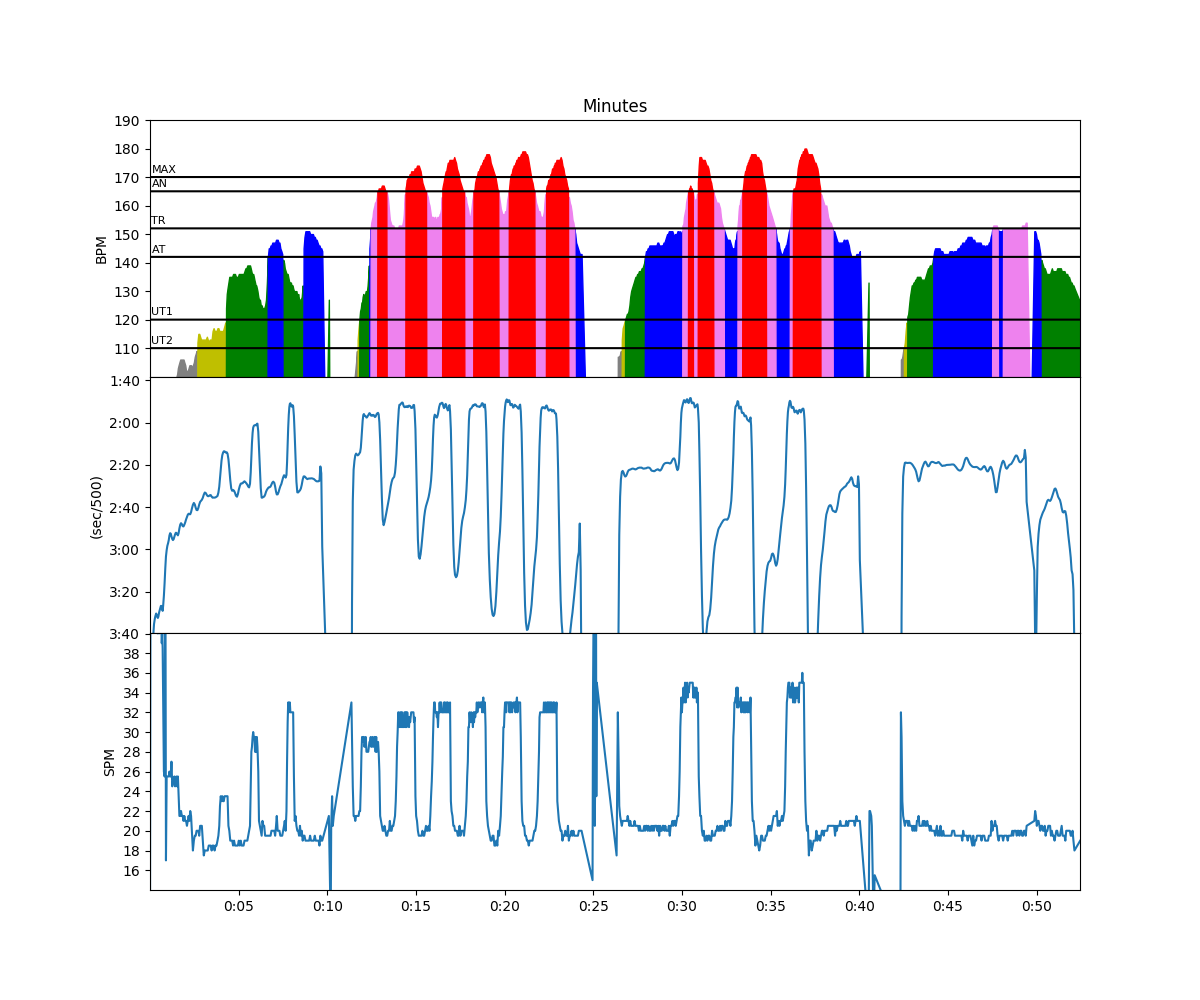
We did fewer of them than planned (the plan was 2 sets of 6). These were the first sprint training sessions in our mixed double, and there were some technique frustrations that made us decide to take longer rests in the second set, and do fewer intervals.
On Wednesday, I did the first proper strength workout after my vacation, and it was a heavy one. I felt my sore muscles for three days afterwards, especially the upper body.
On Thursday, the only way to work out was to replace the steady state row planned for Friday with a bike ride from work to home. This is about 45 minutes. Here’s the Strava summary:
I use Strava Elevate to estimate power. It tells me this was a 229W normalized power workout. If I did that on the erg, it would be pretty close to a threshold session:
I think Strava Elevate overestimates some of the power values for the uphill parts. I have to say I arrived very sweaty and tired. But I felt that was mainly because I was cycling this with legs that were still not recovered from some pretty heavy deadlifts and squats on Wednesday’s weights session.
So on Friday, I planned to do Thursday’s 3x2k session. Unfortunately, there was a strong wind and thunderstorms around the lake, so it was not safe to go out on the water, and I had to do this session on the erg. This was the plan:
15 min WU
3x2k/5min (2k per 500m @ 24, 26, 28, 30spm)
15 min CD
Here’s the result:
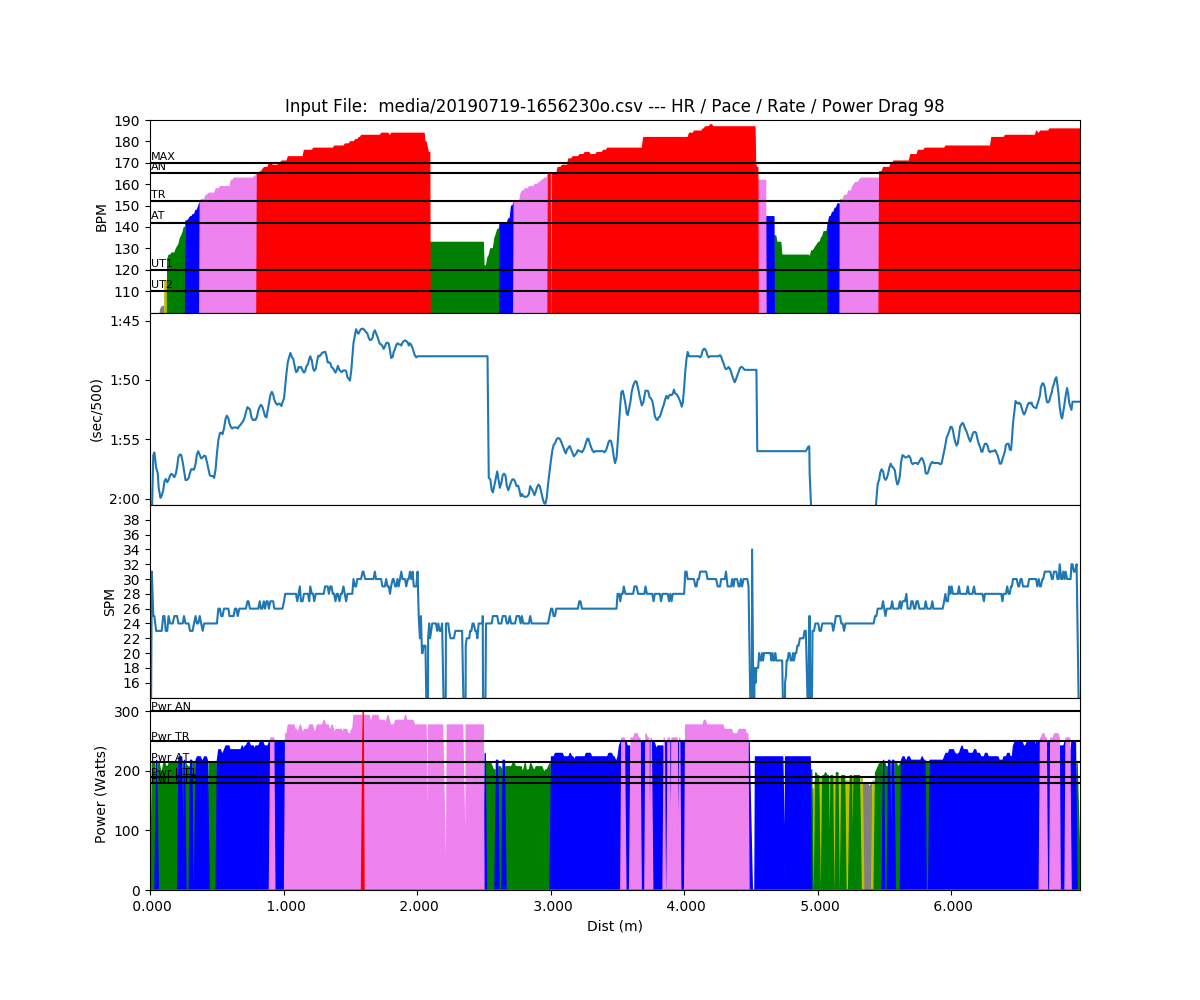
You can see that I stuck to the stroke rates, but the power levels dropped from interval 1 to interval 2 and then they dropped even more …
Accumulated fatigue had taken its toll. I decided to skip the weekend sprints session. I had no time to do it anyway. On Saturday I drove to Lipno to drop off my son Robin at a sailing summer camp. Romana and I put the bike rack on the car, and we had a nice bike ride (no data recorded) around the lake, and some swimming. We had dinner in our hotel in Lipno, and drove back home on Sunday – through pouring rain.
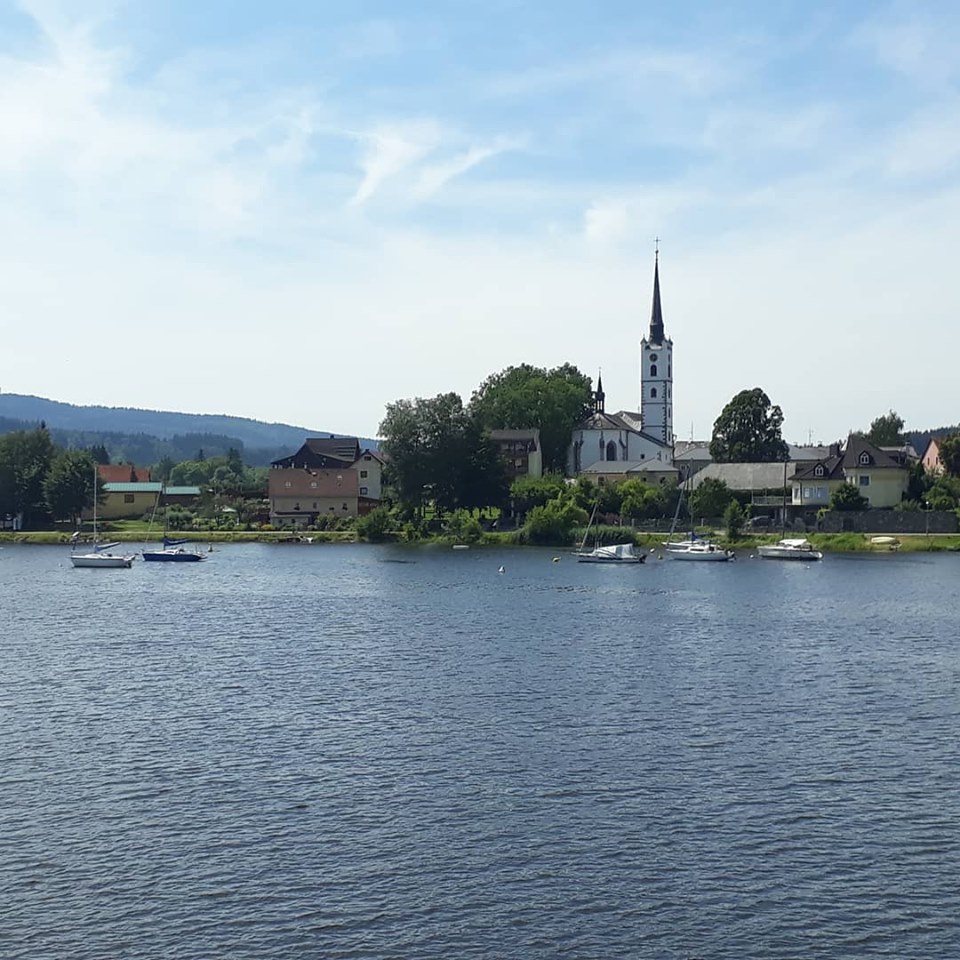
Here is a picture of my son from the camp:
He is the cool looking guy on the right. When I see this picture, I wish I had his age and discovered the joy of sailing again. I was lucky to grow up in The Netherlands where we had plenty of opportunity to mess around with (sailing/kayaking/canoe/rowing) boats without adult supervision. Ah, fond memories.
Week 2
Weekend rest over, moving on to the next week.
 On Monday evening, I did a steady state session in the single, and I had company. Cenek, another Masters rower from our club, went out in the single and we rowed together. It was great to have company. The other fun fact about this outing is that according to my SpeedCoach GPS, I did exactly 10,000 meters.
On Monday evening, I did a steady state session in the single, and I had company. Cenek, another Masters rower from our club, went out in the single and we rowed together. It was great to have company. The other fun fact about this outing is that according to my SpeedCoach GPS, I did exactly 10,000 meters.
I also picked up my new Garmin watch on that day. It’s the Vivoactive 3. I will try it out for a few weeks, both for sleep tracking and recording different types of workouts.
On Tuesday, I did Wednesday’s strength session. I used the new Garmin Vivoactive 3 to autorecord exercise types and numbers of repeats. It did a pretty good job, but I felt like a gadget freak in front of my trainer, tapping the watch’s face after every set.
On Thursday, Romana and I did a 6x250m sprint session. Those sprints were supposed to be done 2 at 34spm, 2 at 36spm and 2 at 38spm.
To be honest, I planned to swap this session with Thursday’s one, and move the lighter looking 250m sprints to Thursday, to get some rest for the races. Butwhen I arrived at the lake, Romana had a really heavy day at work and she looked like she really wasn’t into any discussion. She didn’t look to energized for rowing either. This was one of these hot summer evenings when our lake turns into a 3km by 700m large swimming pool. Sailing boats. Standup paddle boards. Swimmers. Pedalos. Small electric boats. Romana hates this. She sits on bow and basically turns her head on every third stroke, and I can sense from the rowing that she’s not fully focused on technique. I guess when rowing in the single, I am worried about crashing into a pedalo or hitting a swimmer with my blade too, but in the heat of the intervals I am maybe a bit more careless. Romana is not.
So. A silent session mainly. I tactically decided to just row on stroke. We somehow did the sprints (changed from 250m distance based to 30 stroke count based so we wouldn’t have to fiddle with the electronics), and we made it a very short session:
Workout Summary - media/20190724-1710520o.csv
--|Total|-Total----|--Avg--|-Avg-|Avg-|-Avg-|-Max-|-Avg
--|Dist-|-Time-----|-Pace--|-Pwr-|SPM-|-HR--|-HR--|-DPS
--|07604|00:44:37.7|02:56.1|000.0|22.5|135.8|180.0|07.6
W-|01376|00:05:13.6|01:54.0|000.0|33.4|153.5|179.0|07.9
R-|06233|00:39:24.5|03:09.7|000.0|21.0|133.4|179.0|08.7
Workout Details
#-|SDist|-Split-|-SPace-|-Pwr-|SPM-|AvgHR|MaxHR|DPS-
01|00269|01:01.9|01:54.9|000.0|31.0|158.8|172.0|08.4 - tailwind
02|00238|00:53.4|01:52.3|000.0|31.5|156.8|173.0|08.5 - tailwind
03|00189|00:46.9|02:03.9|000.0|33.1|160.7|177.0|07.3 - headwind
04|00218|00:51.2|01:57.3|000.0|33.8|165.5|179.0|07.6 - headwind
05|00233|00:50.6|01:48.5|000.0|35.6|130.0|138.0|07.8 - tailwind
06|00228|00:49.6|01:48.6|000.0|36.1|148.4|175.0|07.7 - tailwind
I also reduced the stroke rate a bit when the traffic situation demanded it.
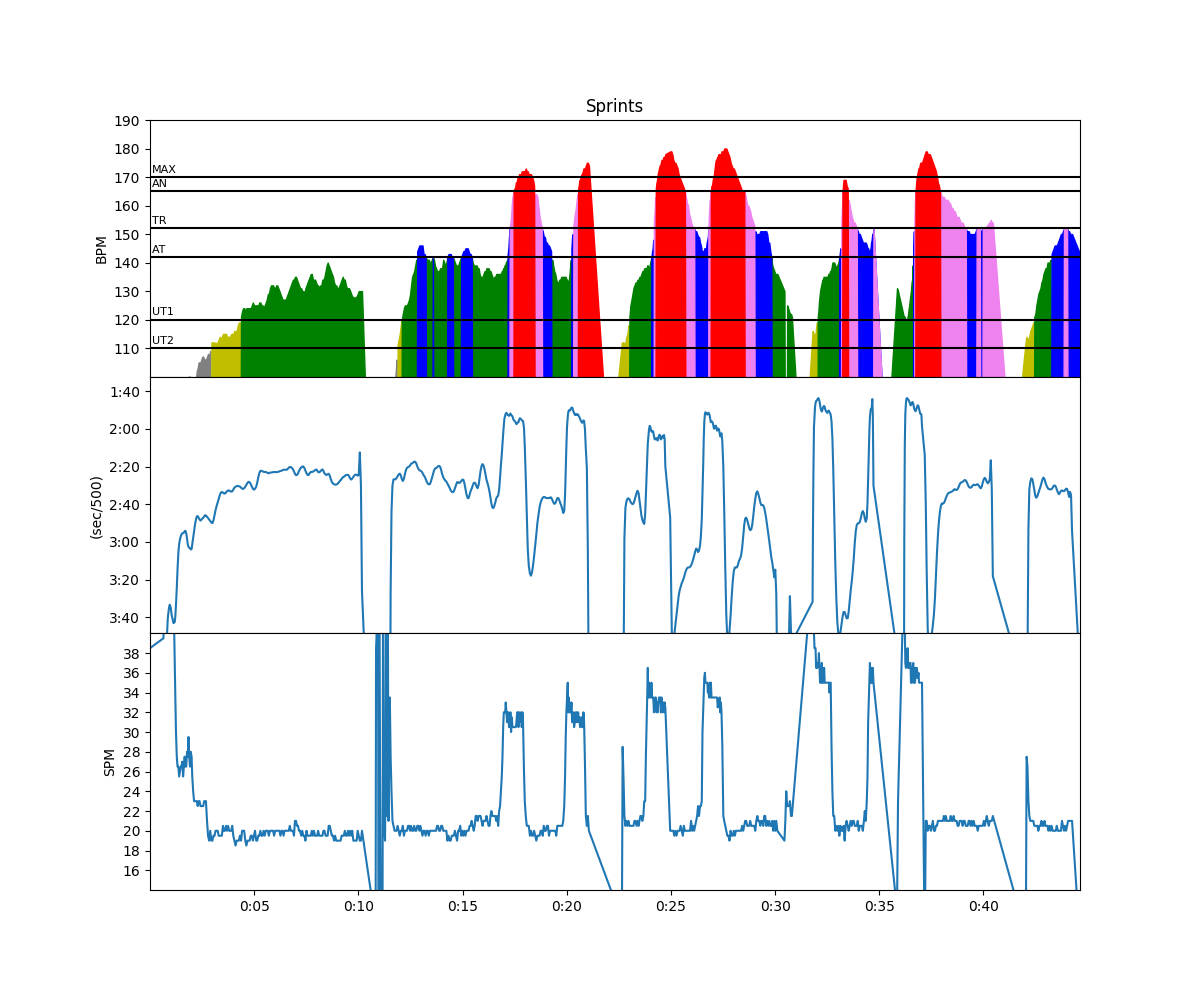
On Thursday, Romana and I went out in the double again. Same scenario as on Wednesday, except that this time Romana was in a very good mood, but we were time limited because we needed to load the trailer for this weekend’s regatta.
Workout Summary - media/20190725-1815590o.csv
--|Total|-Total----|--Avg--|-Avg-|Avg-|-Avg-|-Max-|-Avg
--|Dist-|-Time-----|-Pace--|-Pwr-|SPM-|-HR--|-HR--|-DPS
--|06729|00:40:34.3|03:00.9|000.0|23.5|140.6|182.0|07.0
W-|01171|00:04:24.8|01:53.1|000.0|34.4|152.3|181.0|07.7
R-|05563|00:36:10.0|03:15.0|000.0|22.2|139.2|181.0|06.1
Workout Details
#-|SDist|-Split-|-SPace-|-Pwr-|SPM-|AvgHR|MaxHR|DPS-
01|00229|00:53.3|01:56.3|000.0|33.9|116.2|131.0|07.6 - headwind
02|00243|00:56.4|01:55.9|000.0|32.9|168.8|180.0|07.9 - headwind
03|00241|00:53.6|01:51.4|000.0|34.7|156.9|181.0|07.8 - tailwind
04|00239|00:54.8|01:54.5|000.0|33.9|166.5|178.0|07.7 - headwind
05|00219|00:46.7|01:46.8|000.0|37.2|151.7|181.0|07.5 - tailwind
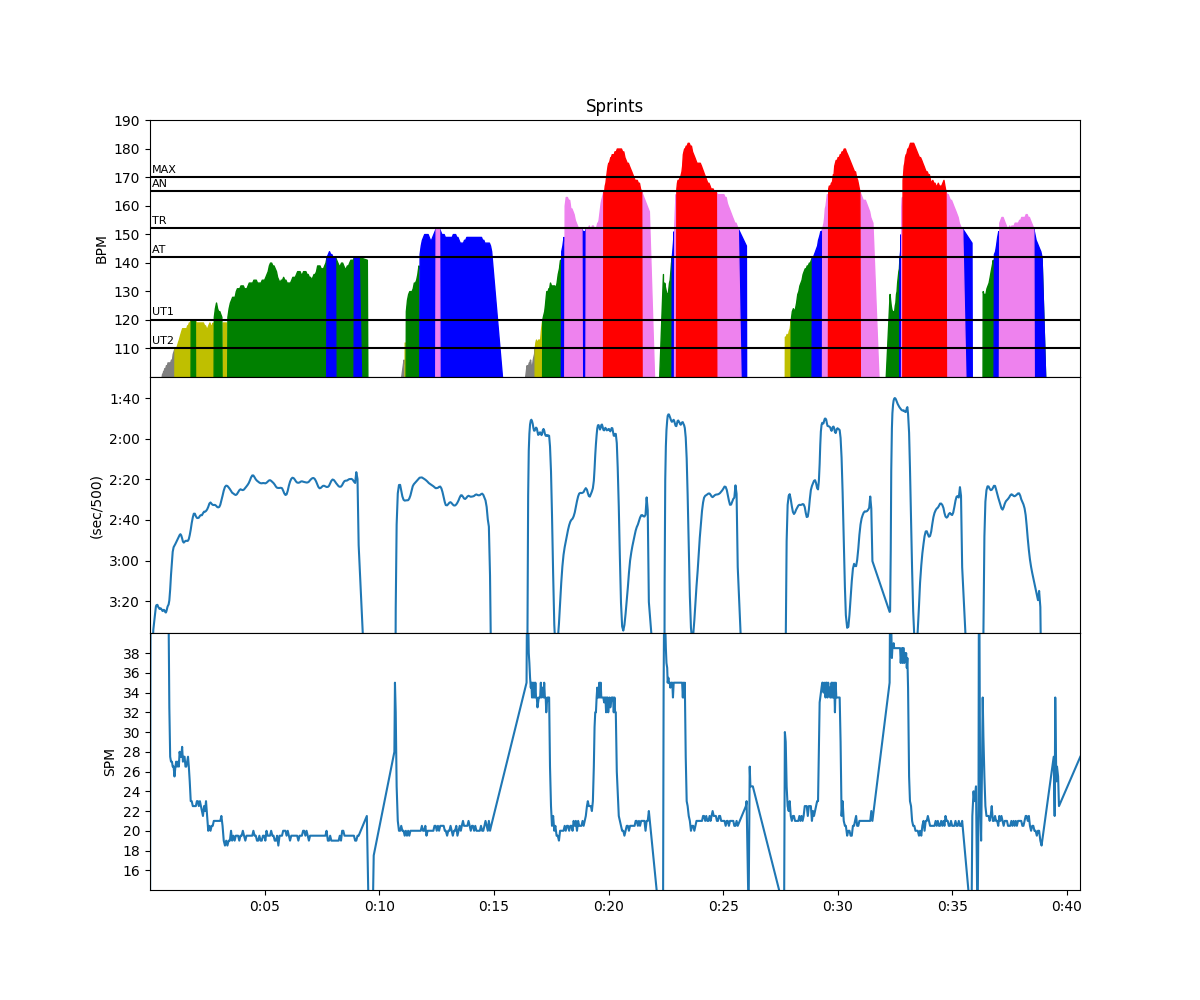
Boats loaded. Everything ready for the EURow (Austrian Open Masters Championships) in Linz/Ottensheim. Just need to drive the trailer from Brno to Ottensheim on Saturday. But I will report about that in a separate blog post.
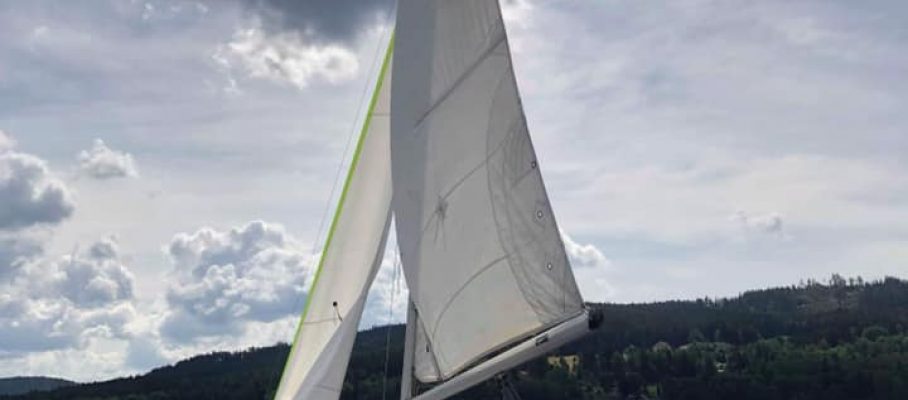

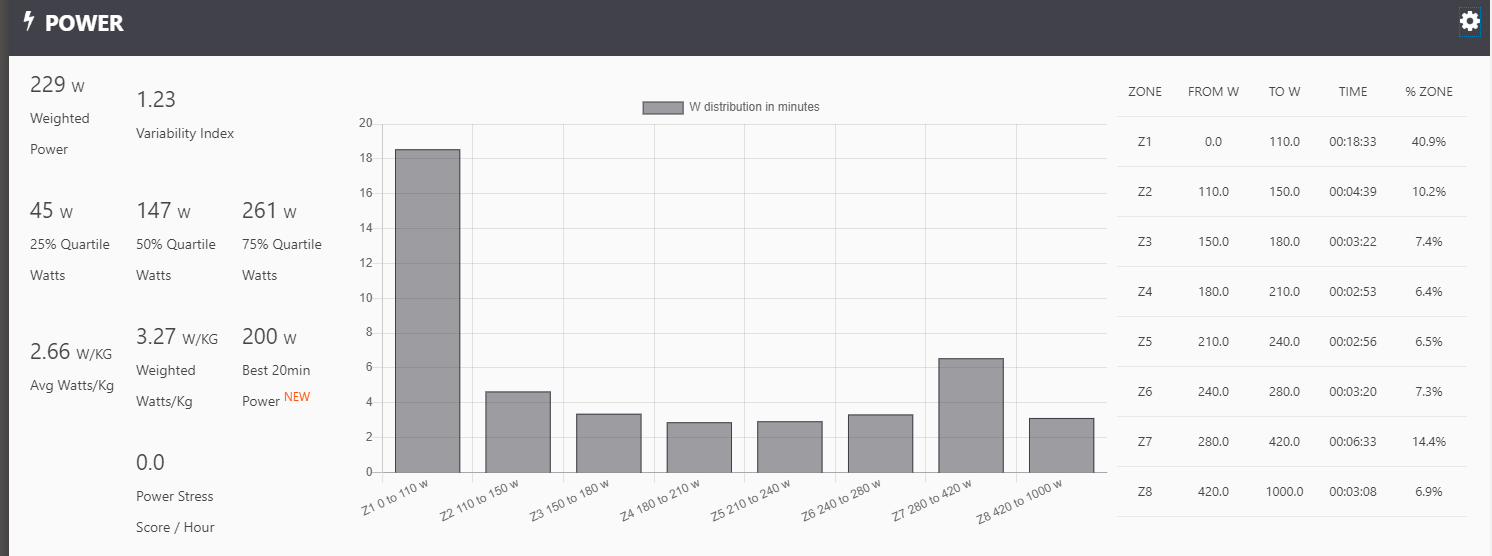
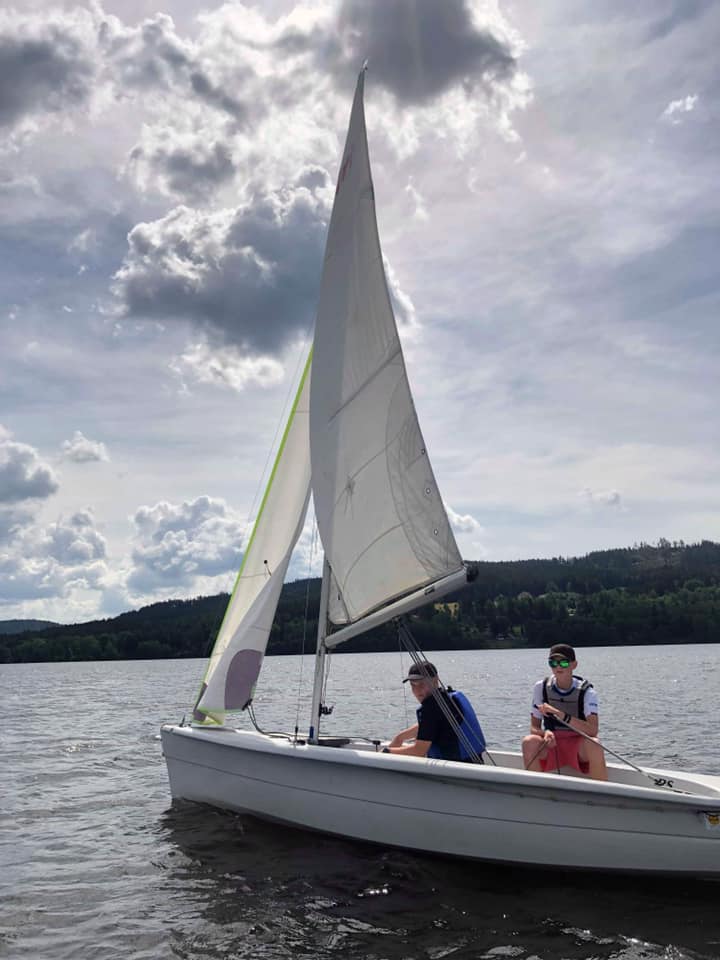
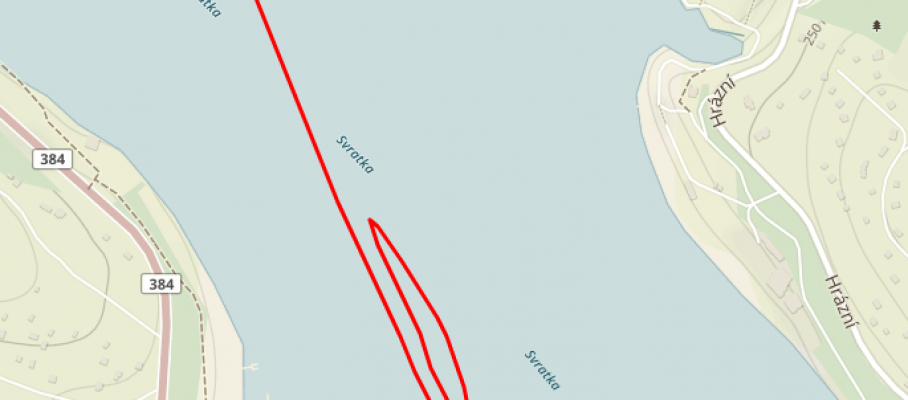
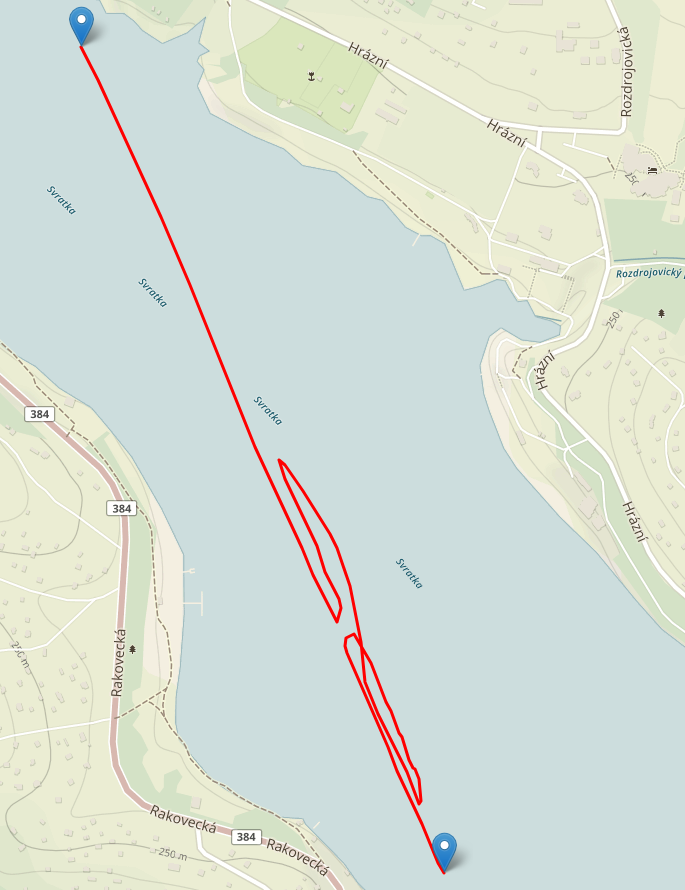
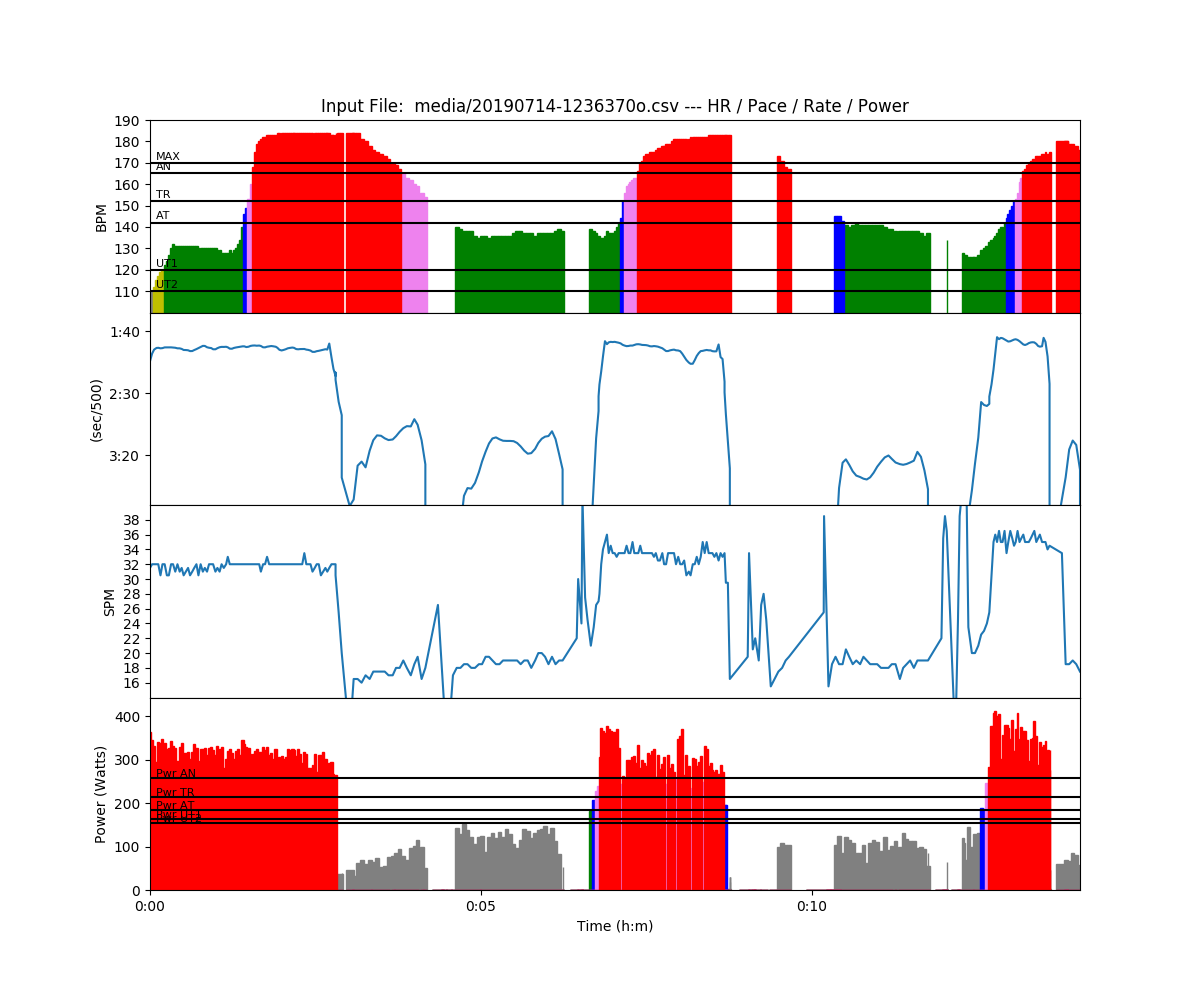
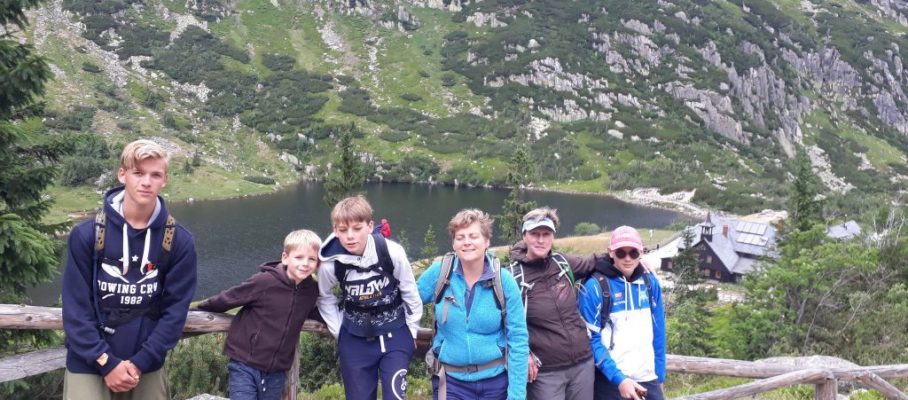
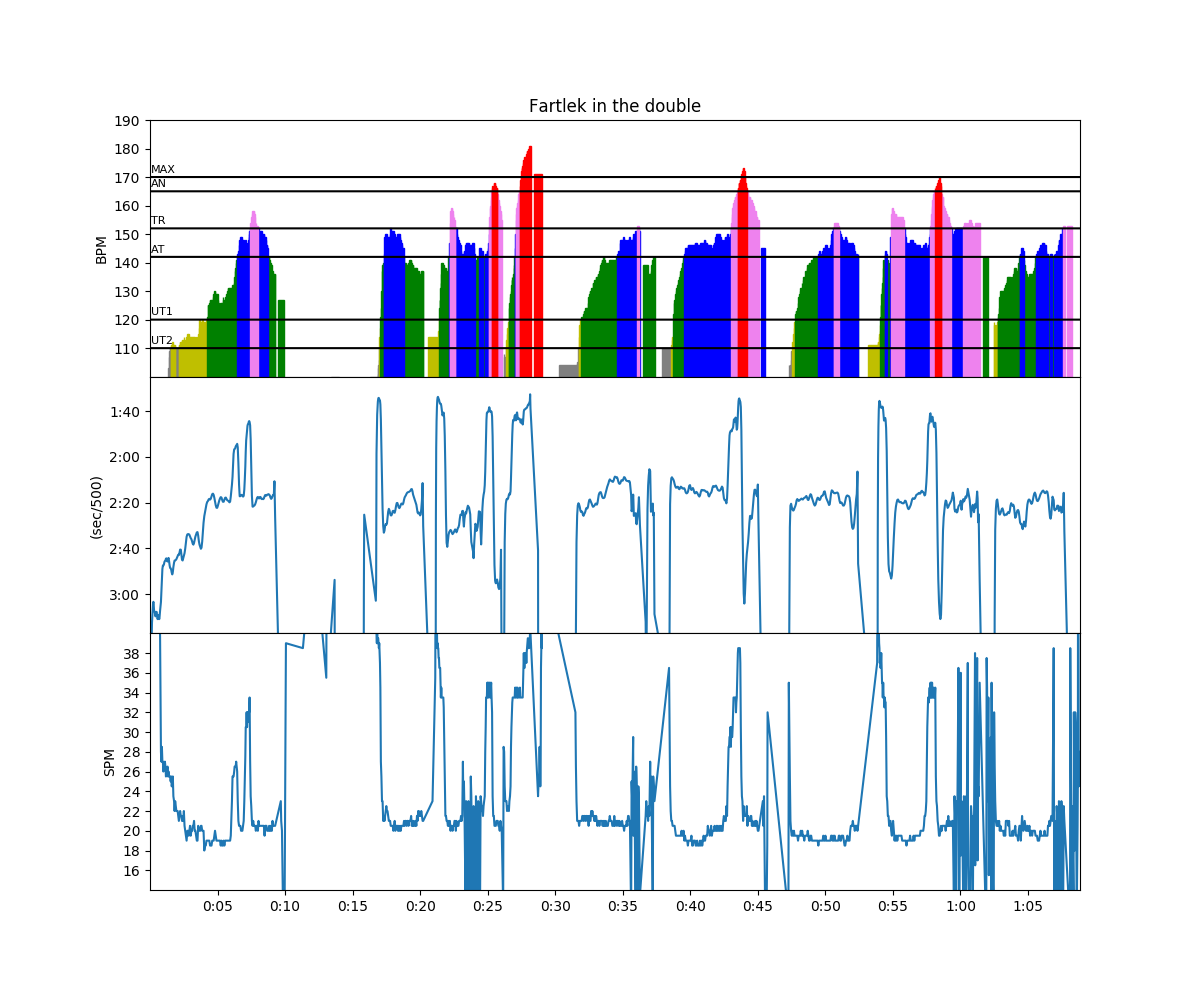
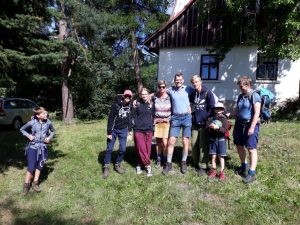
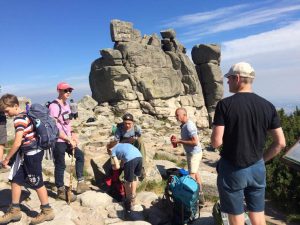
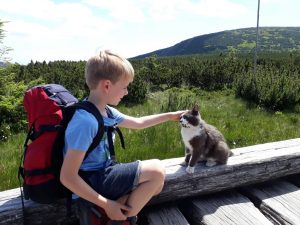
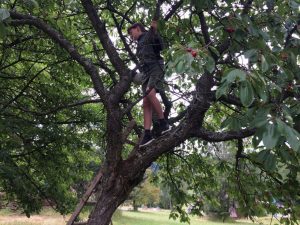

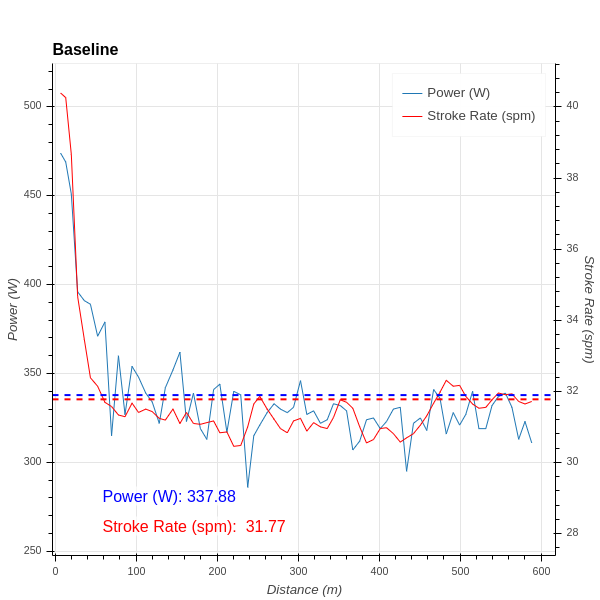

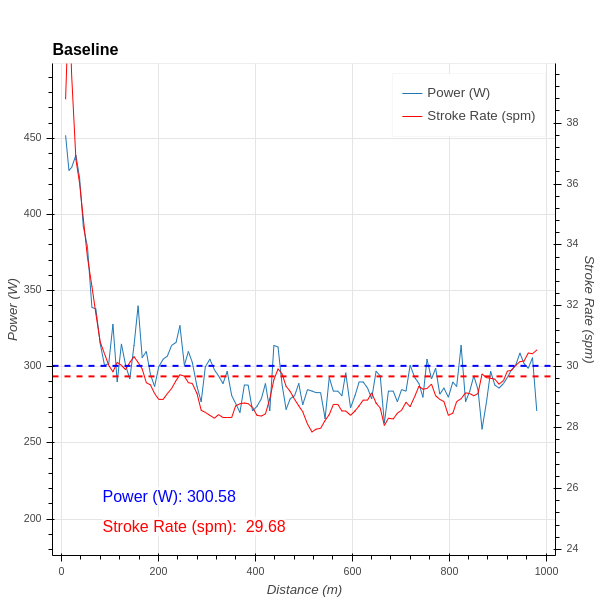
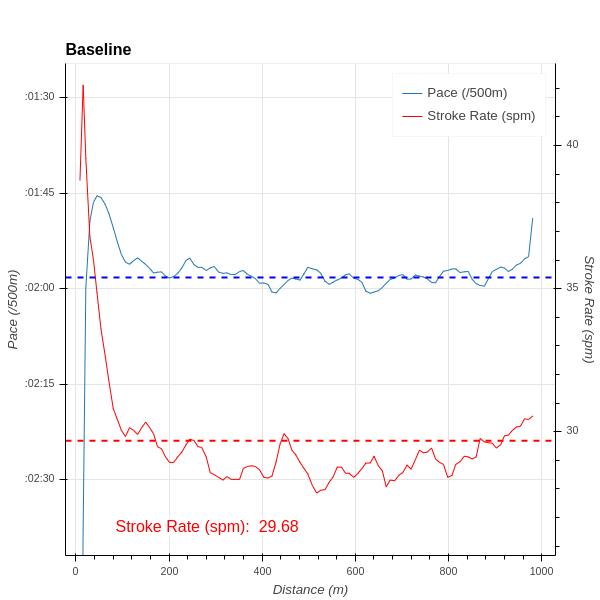

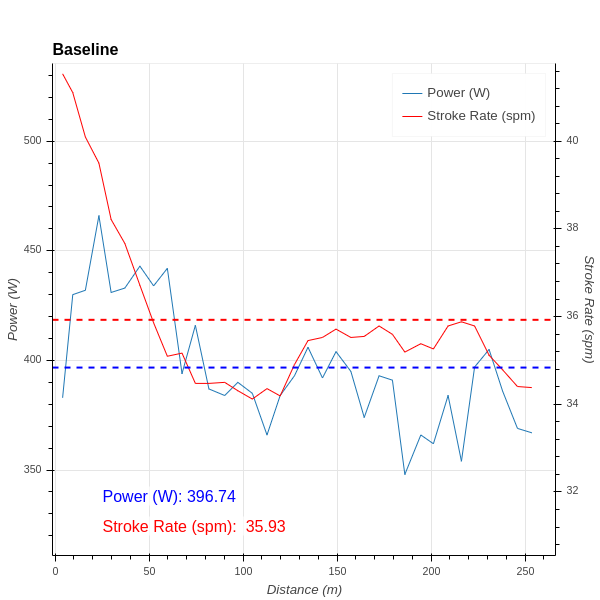
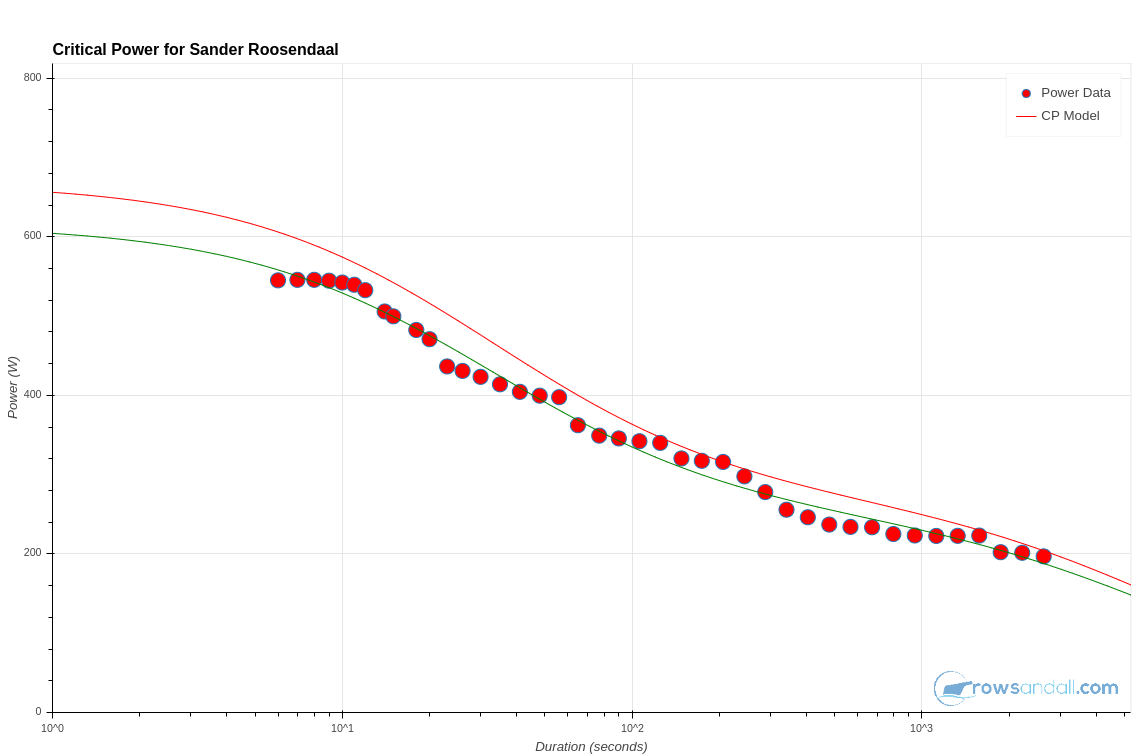
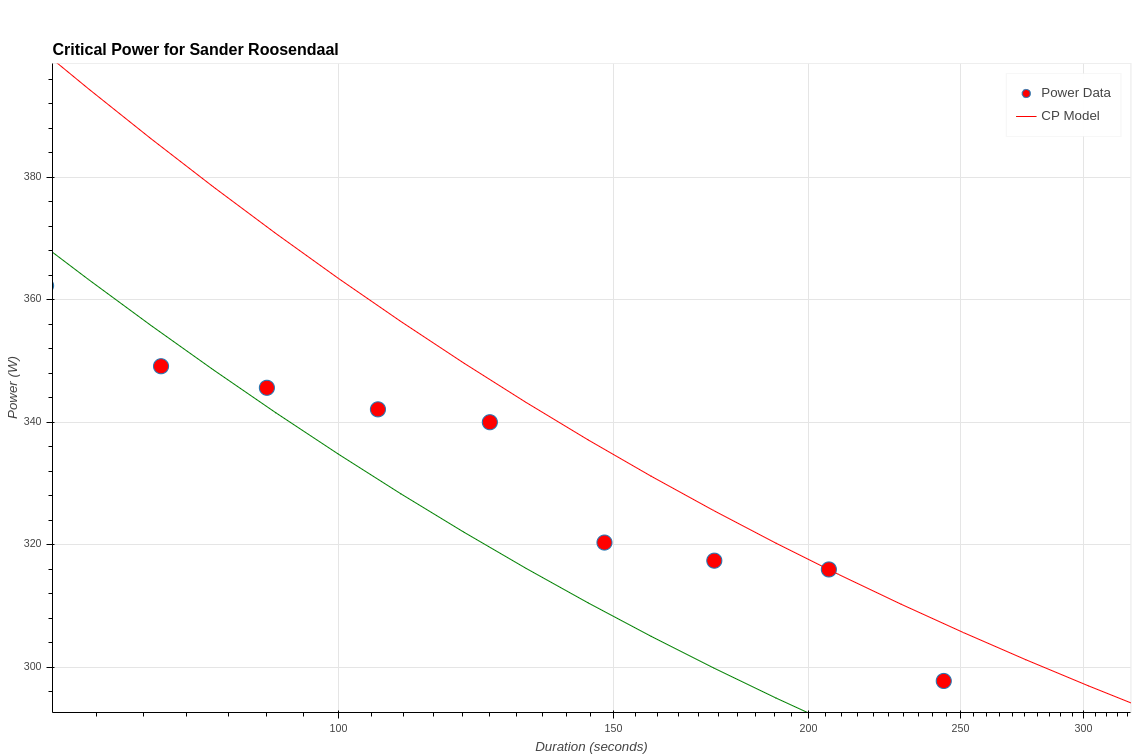
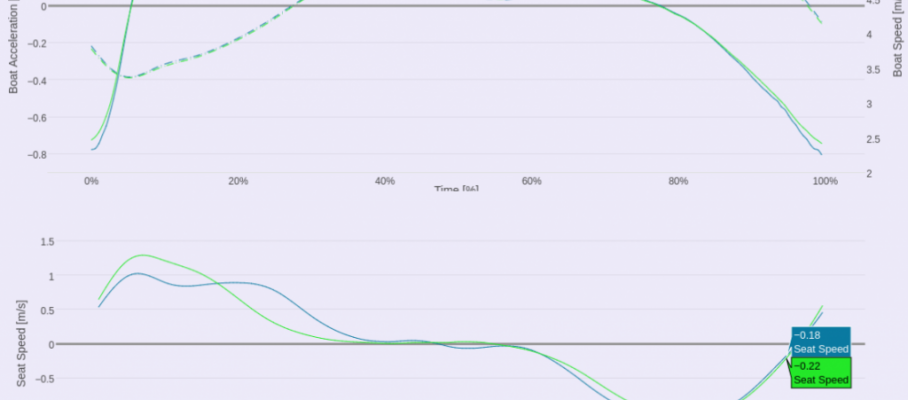

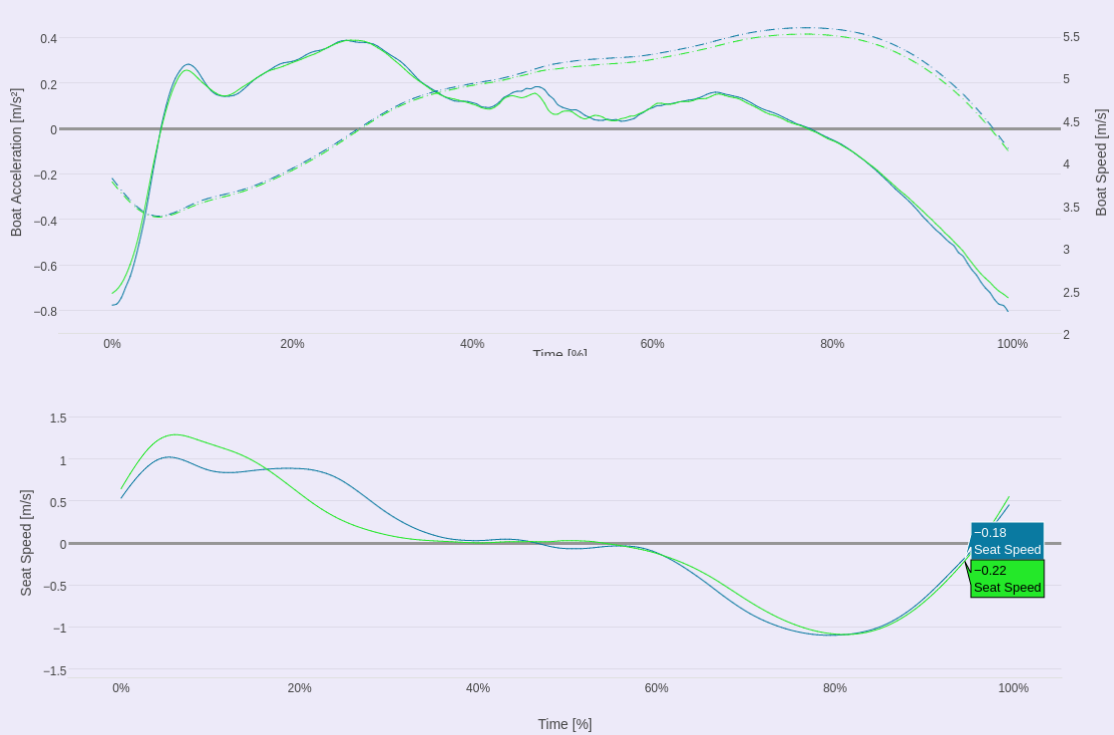
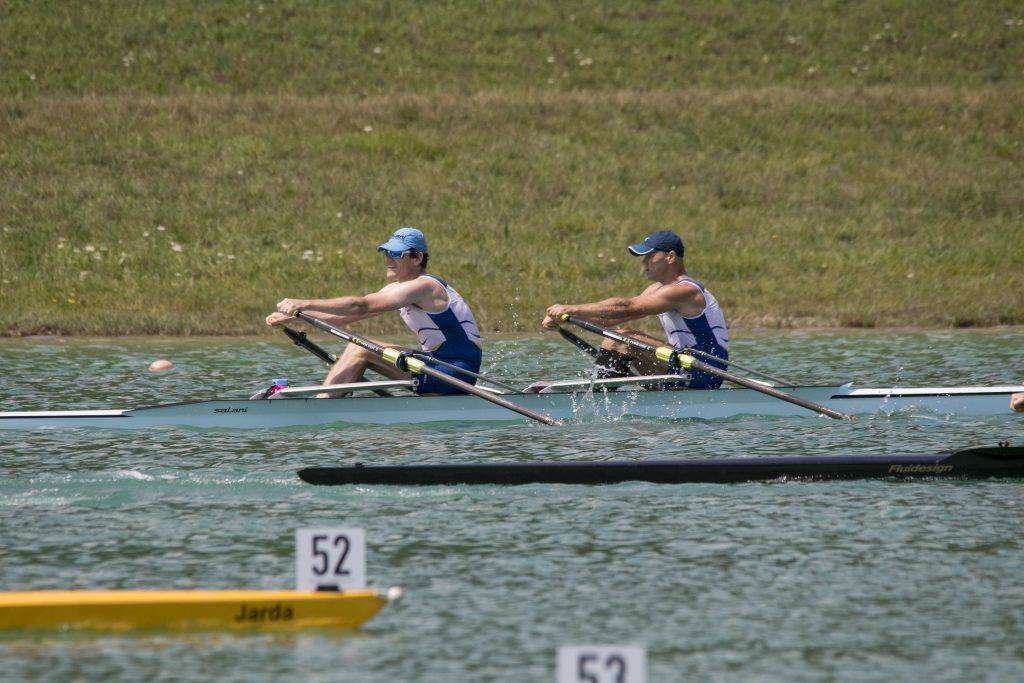
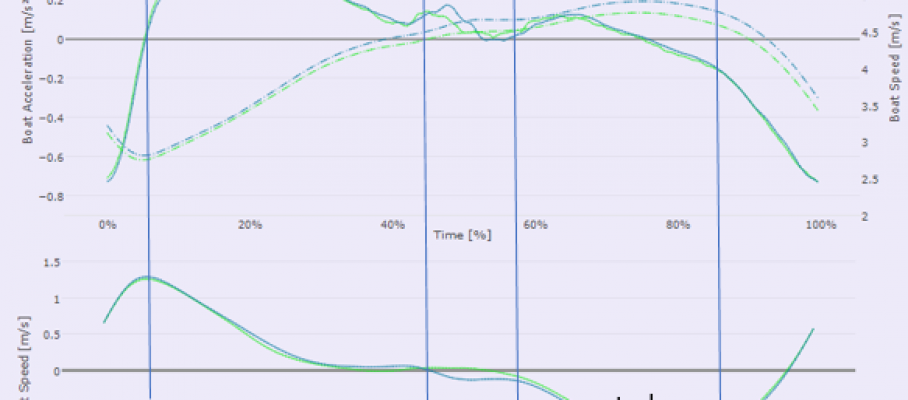
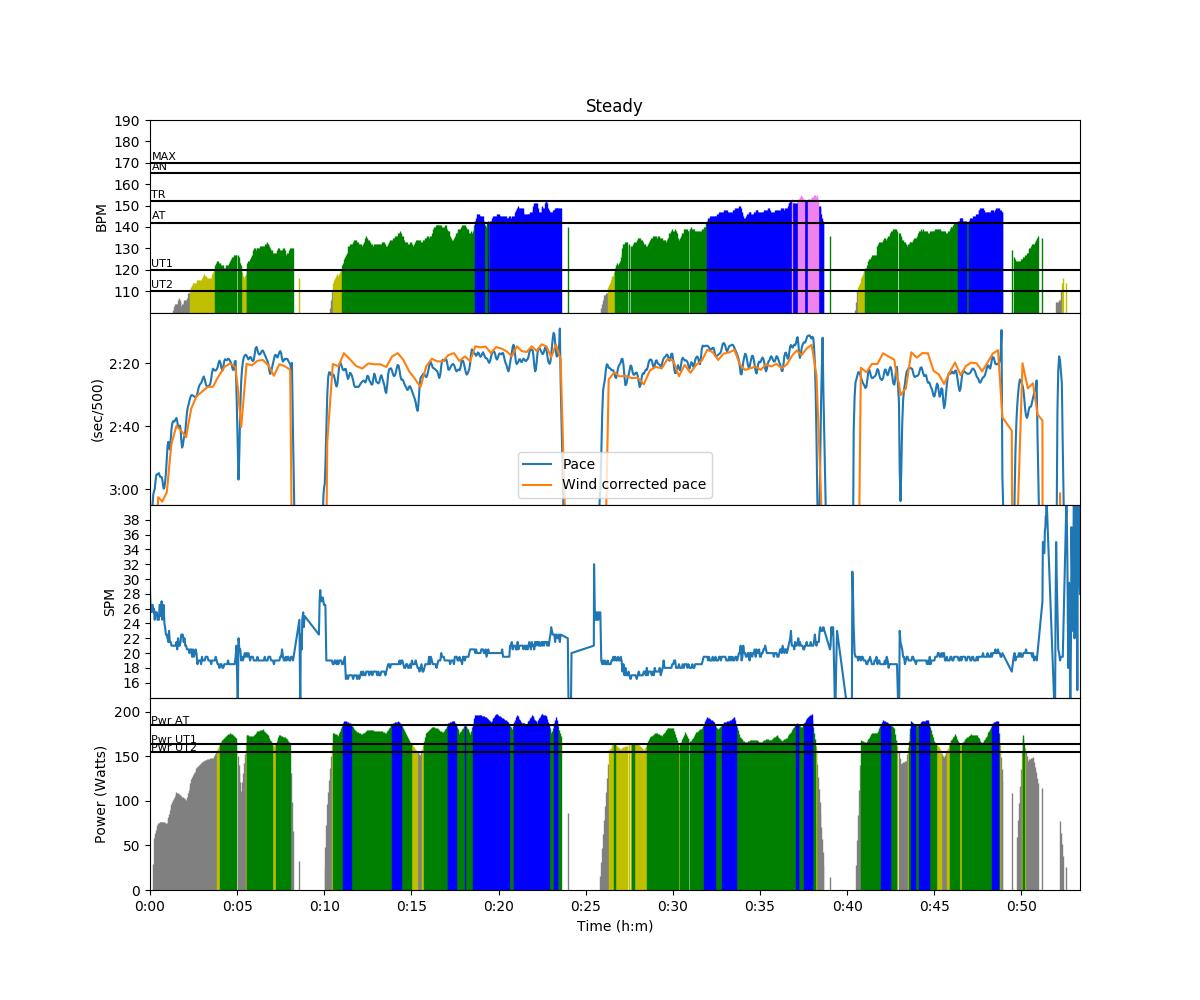
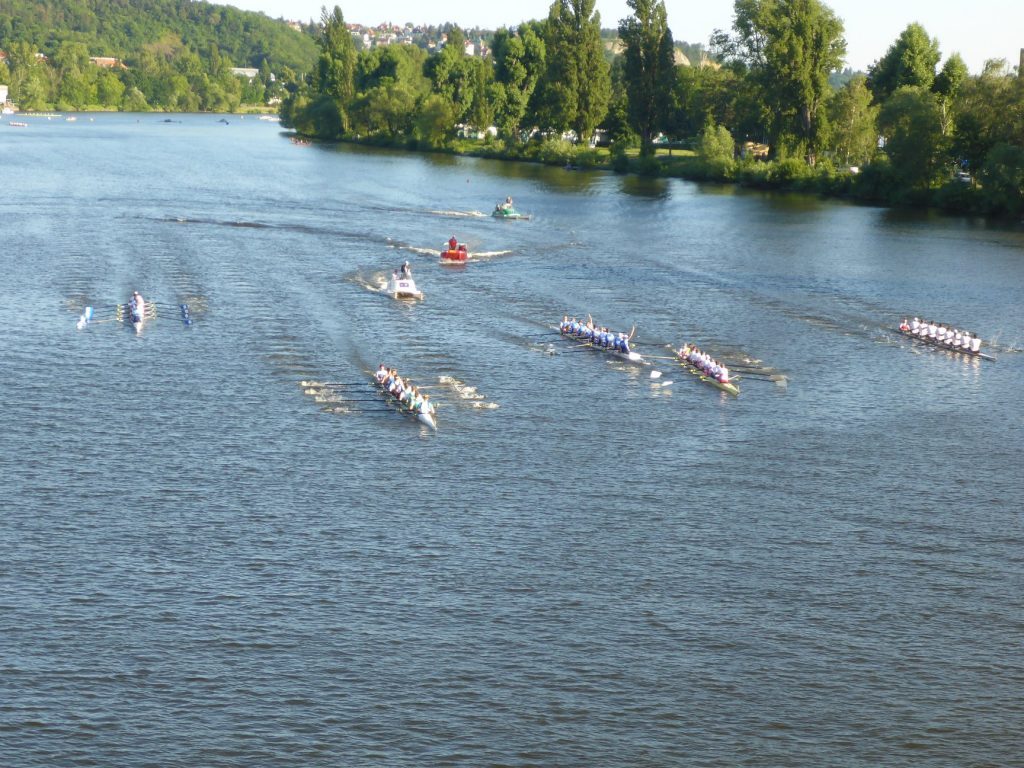
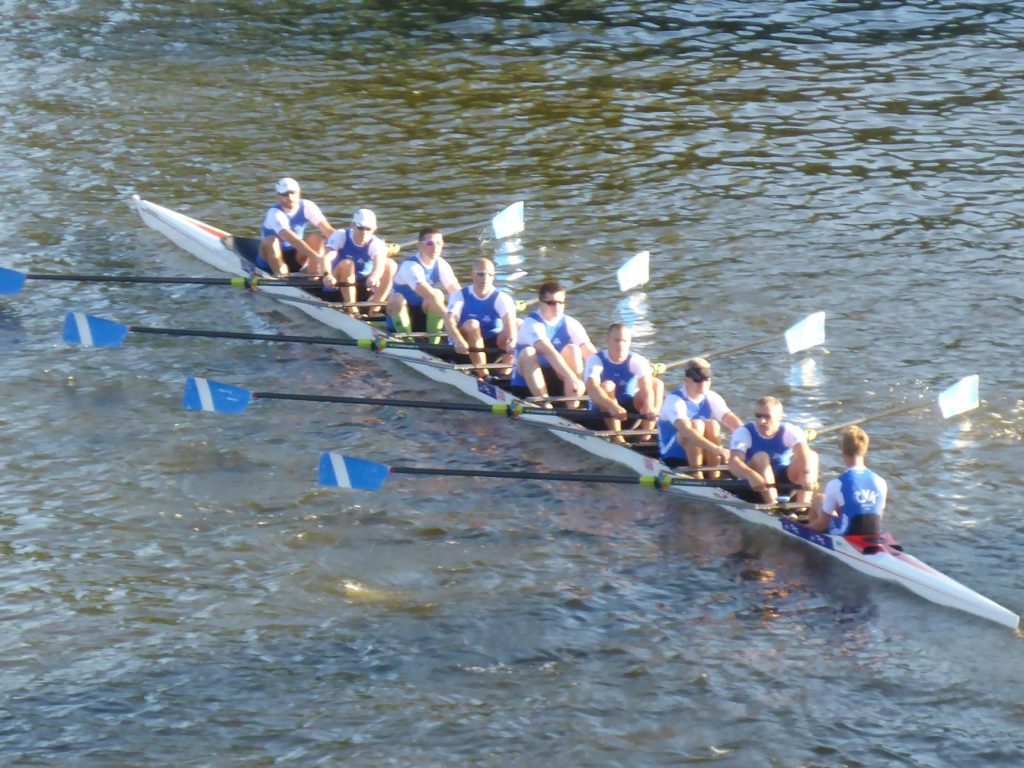
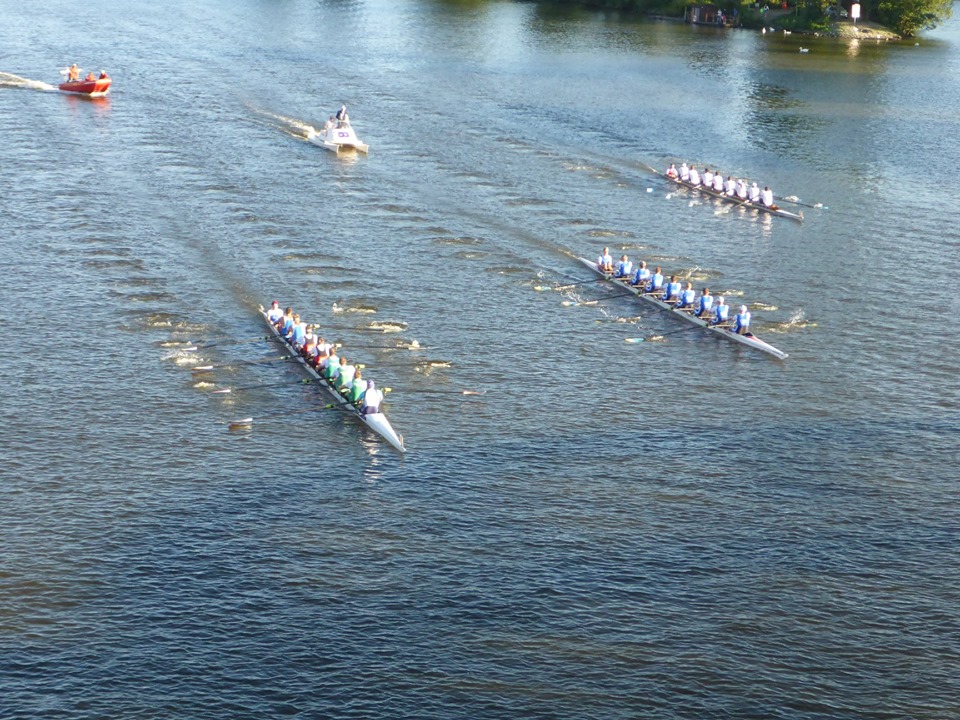
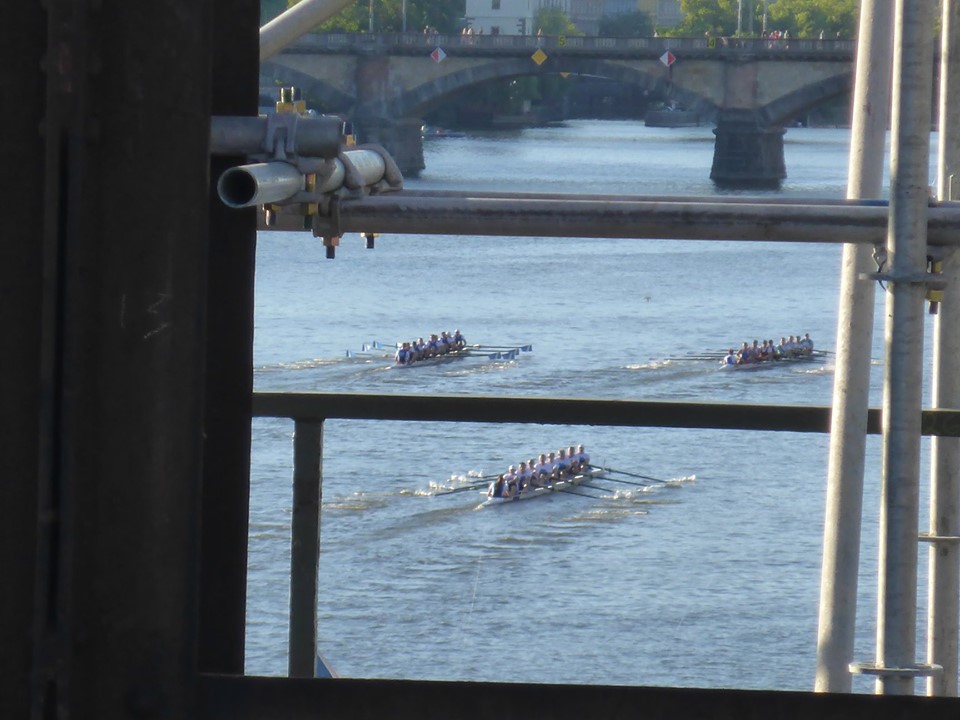
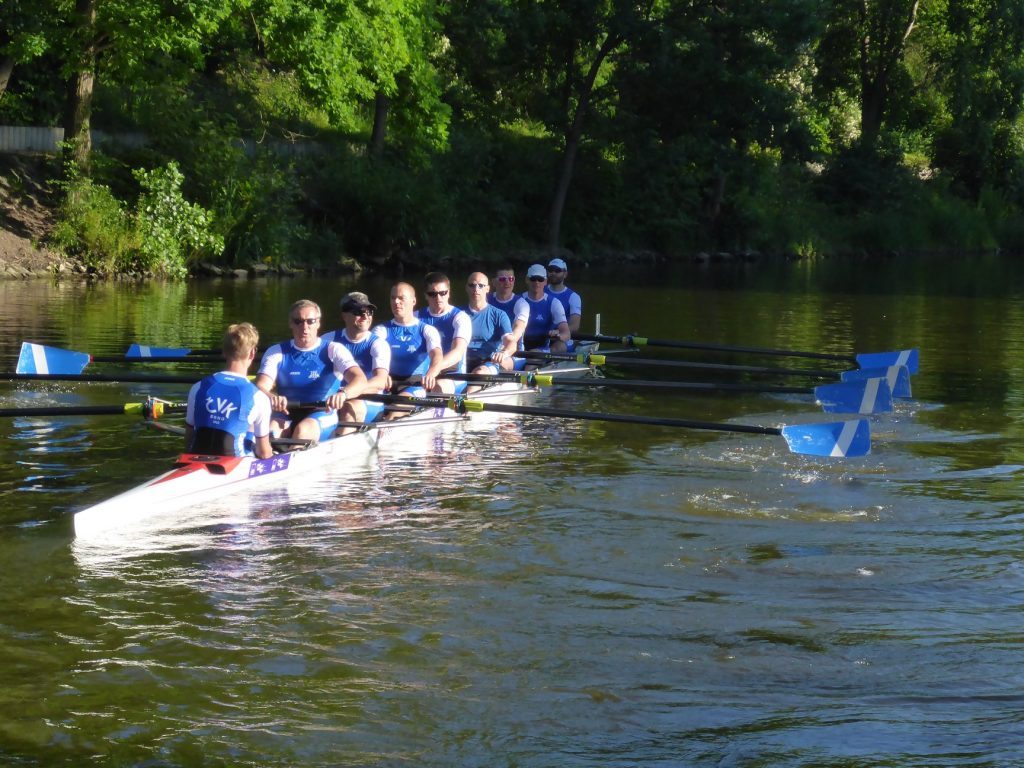
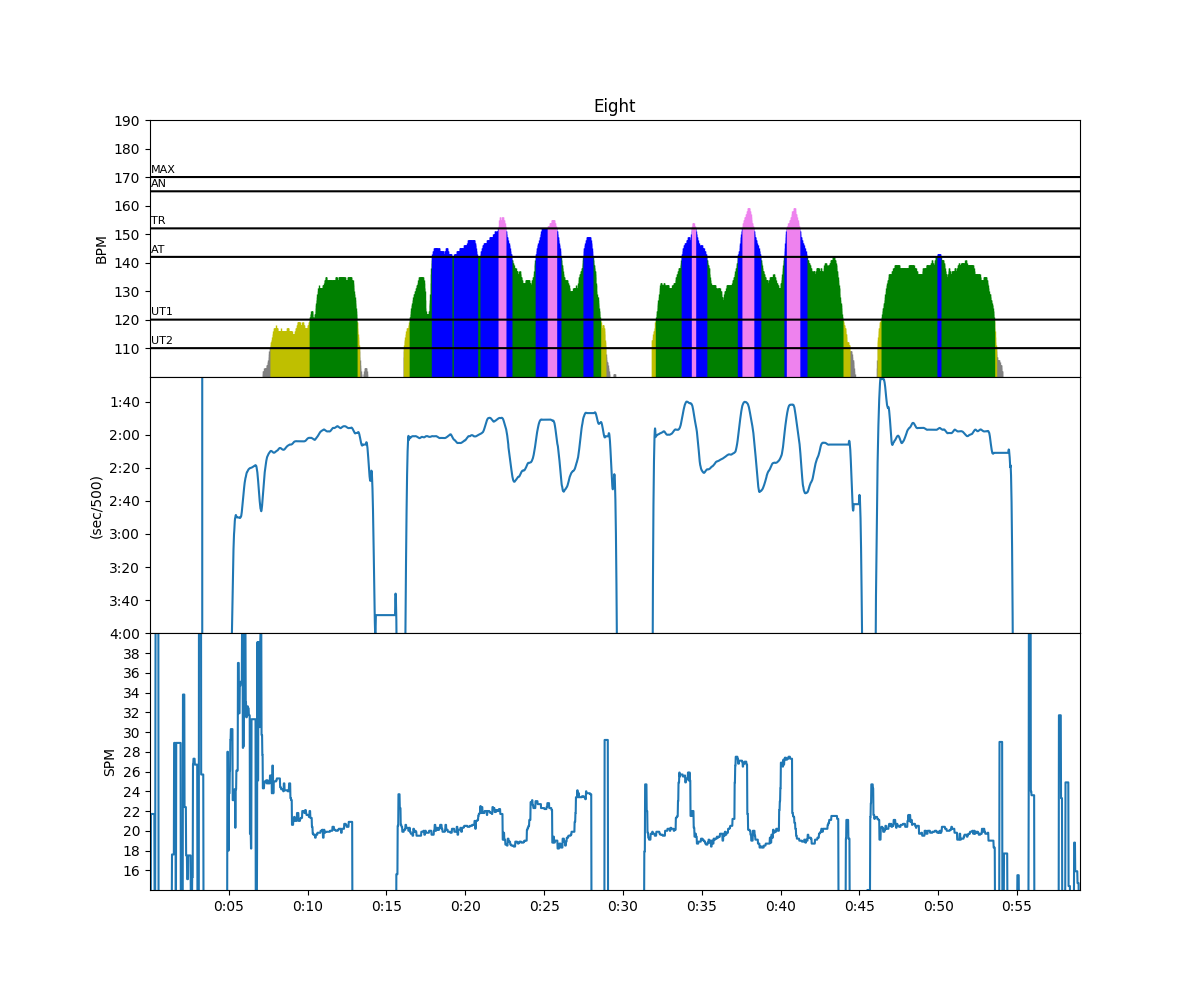
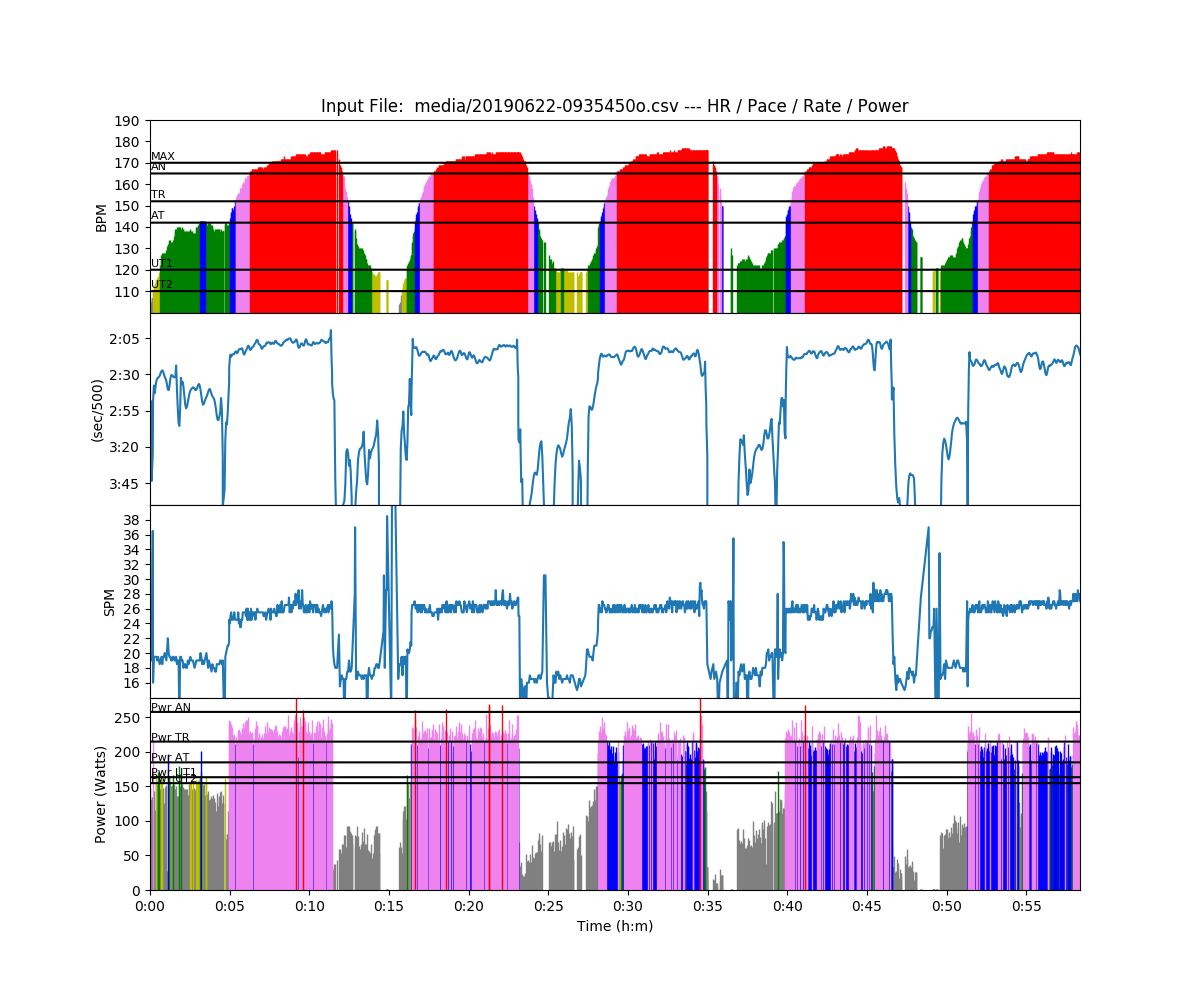
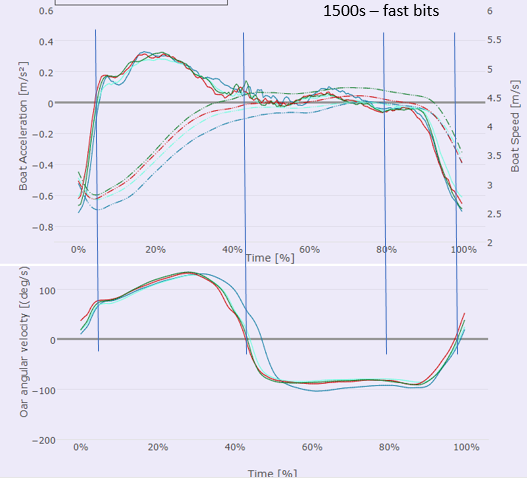
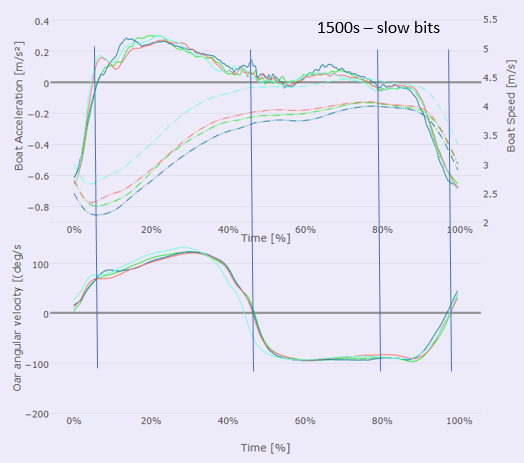






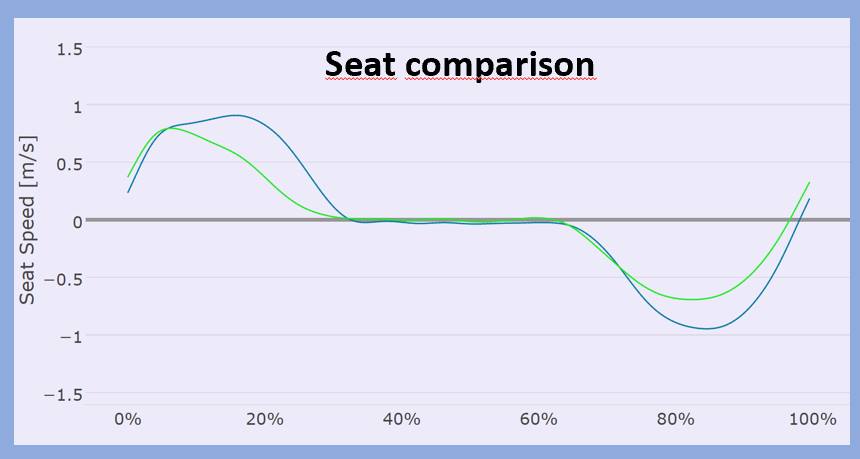
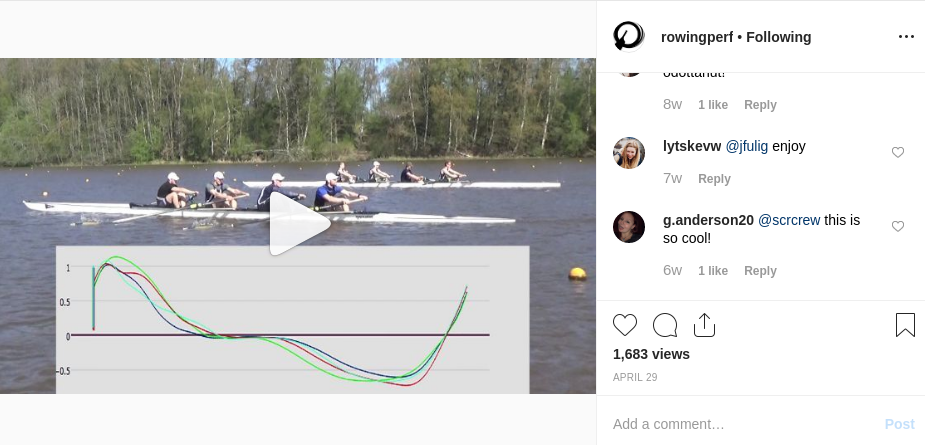
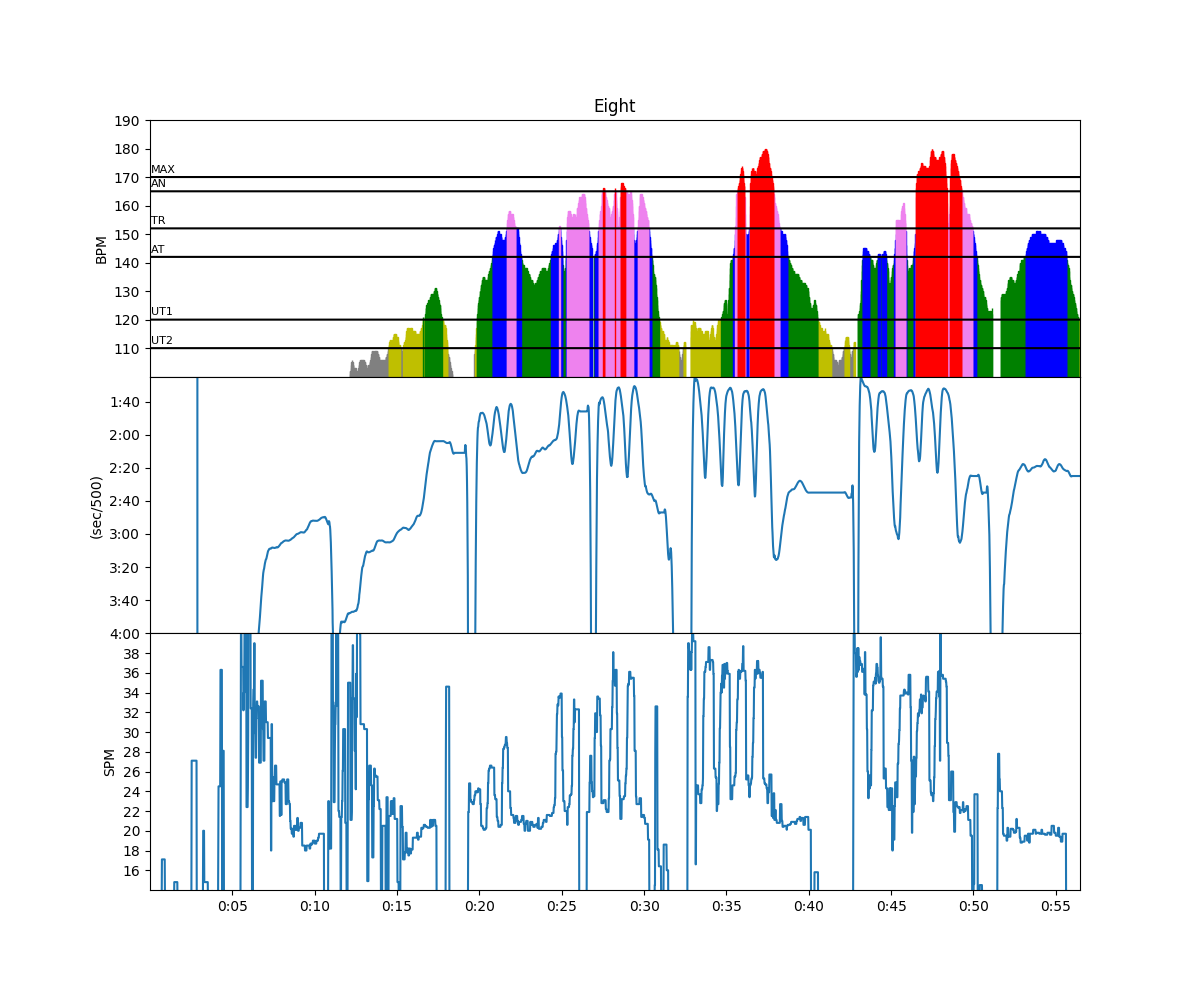
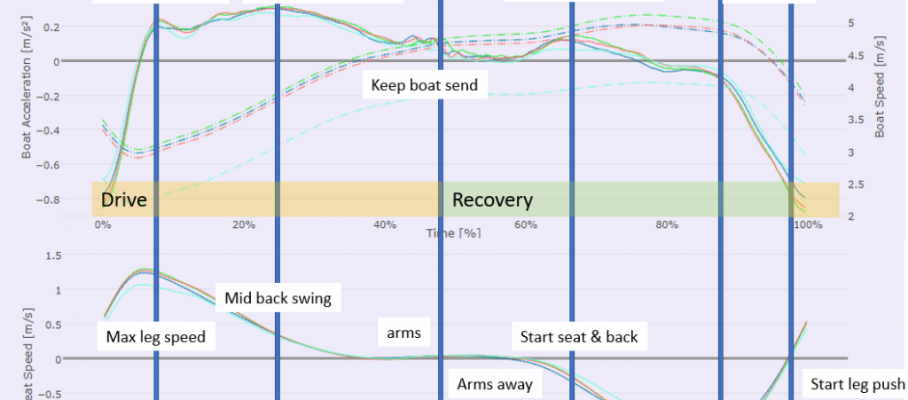

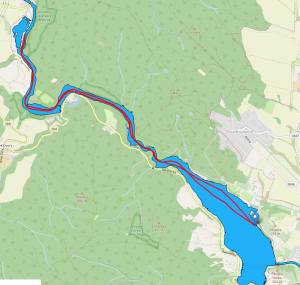
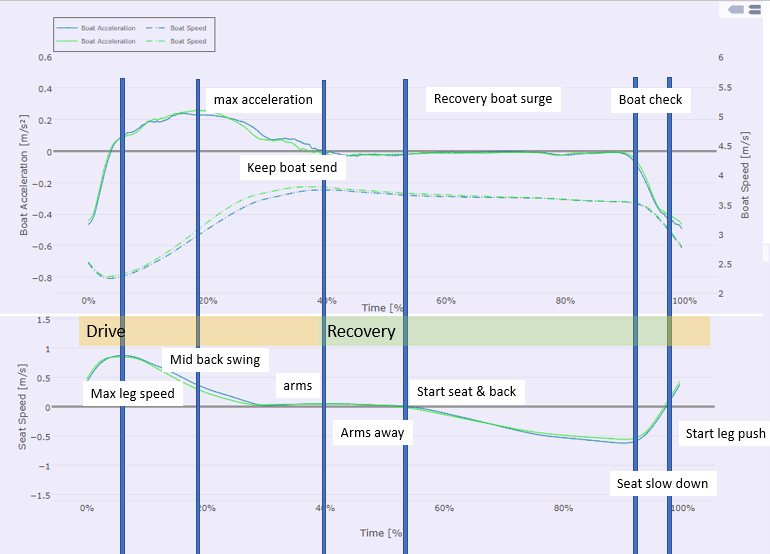
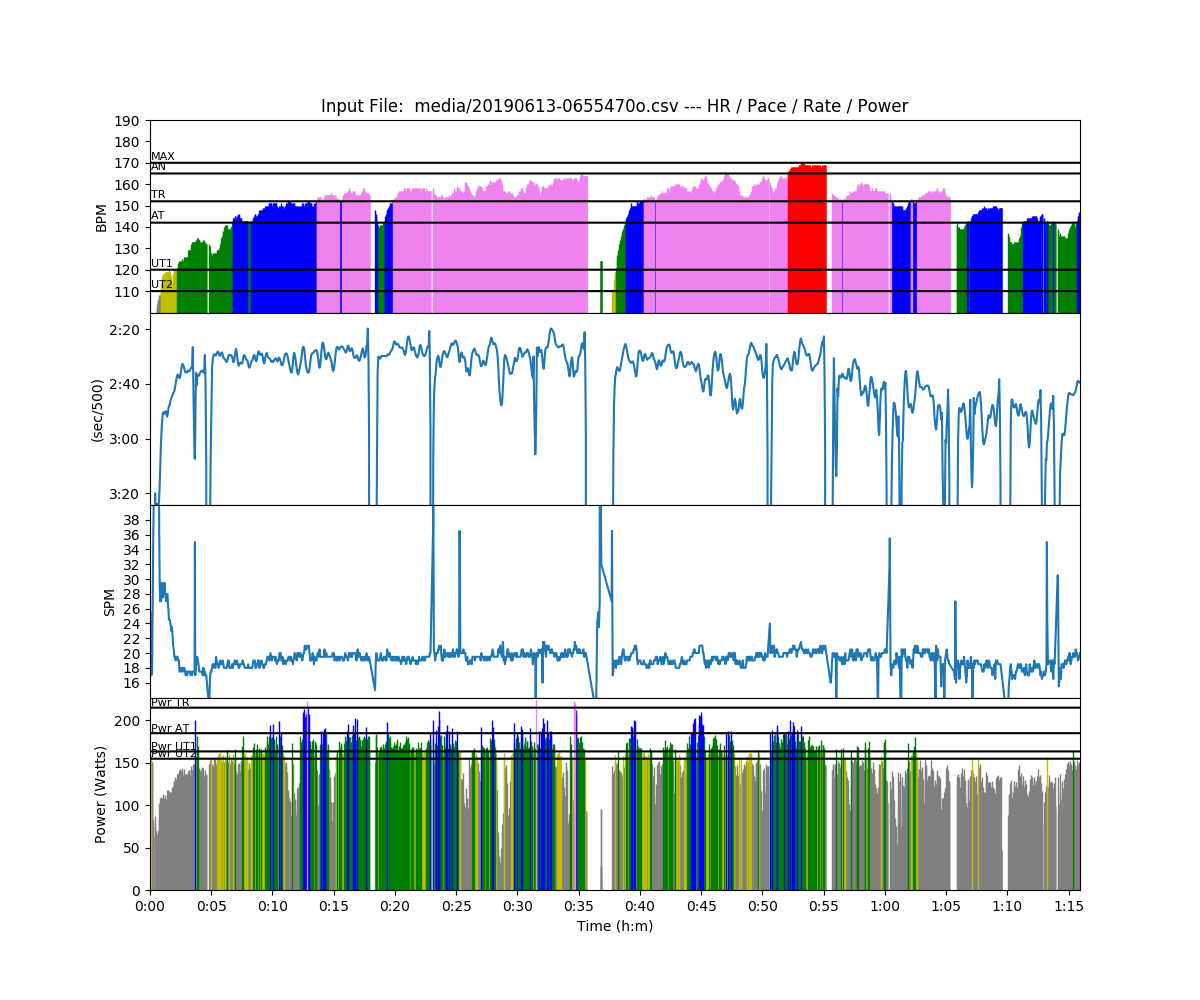
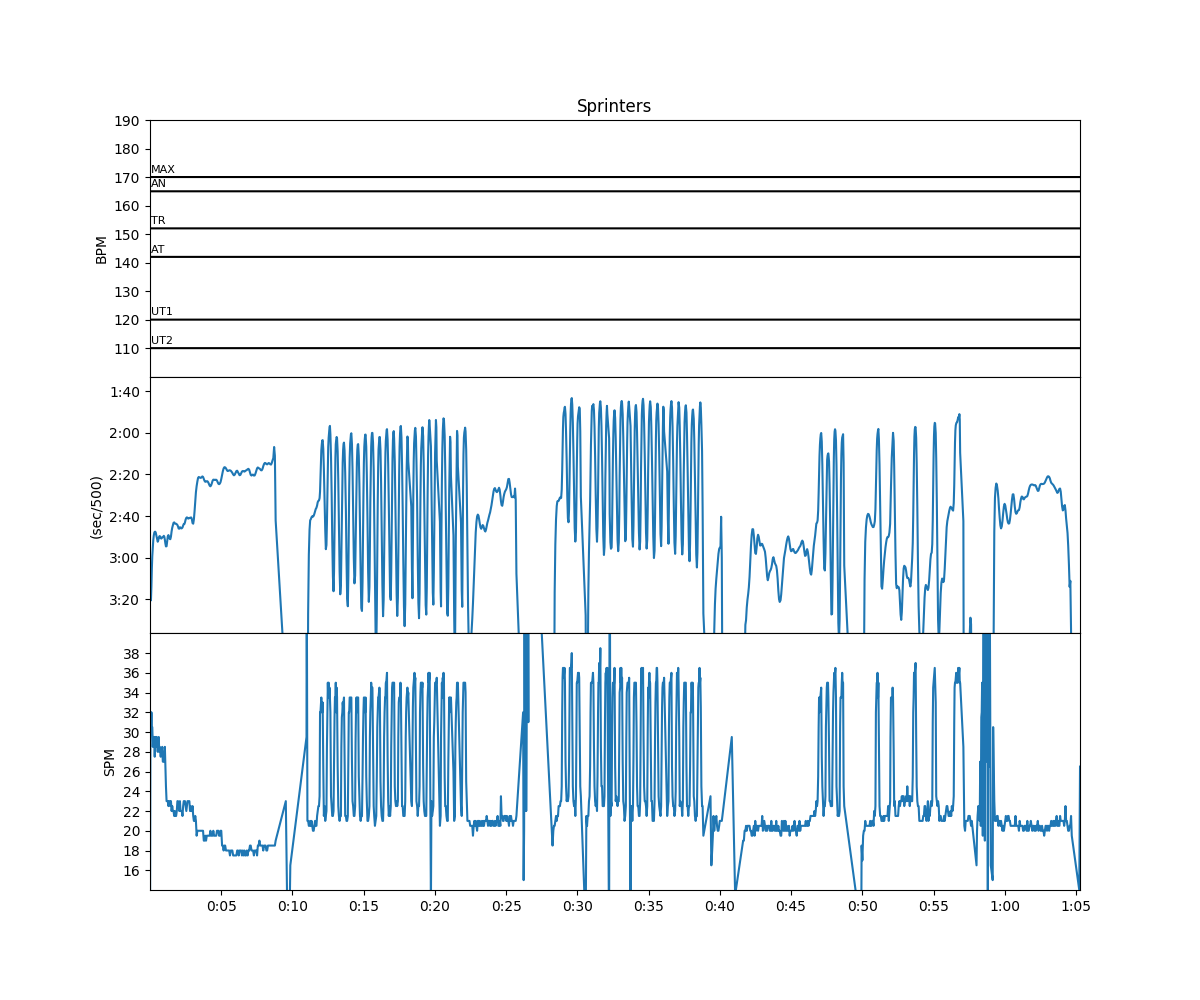
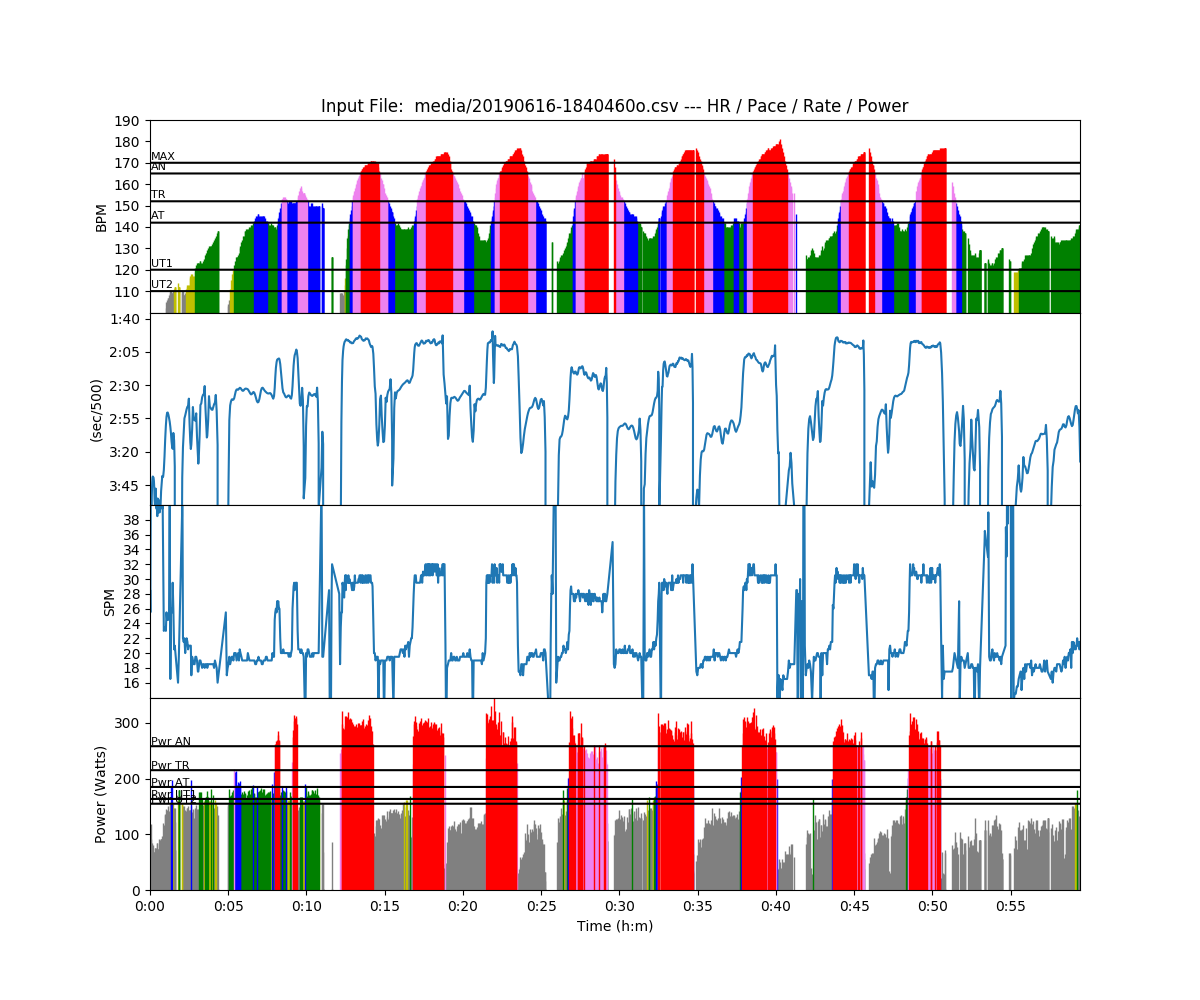
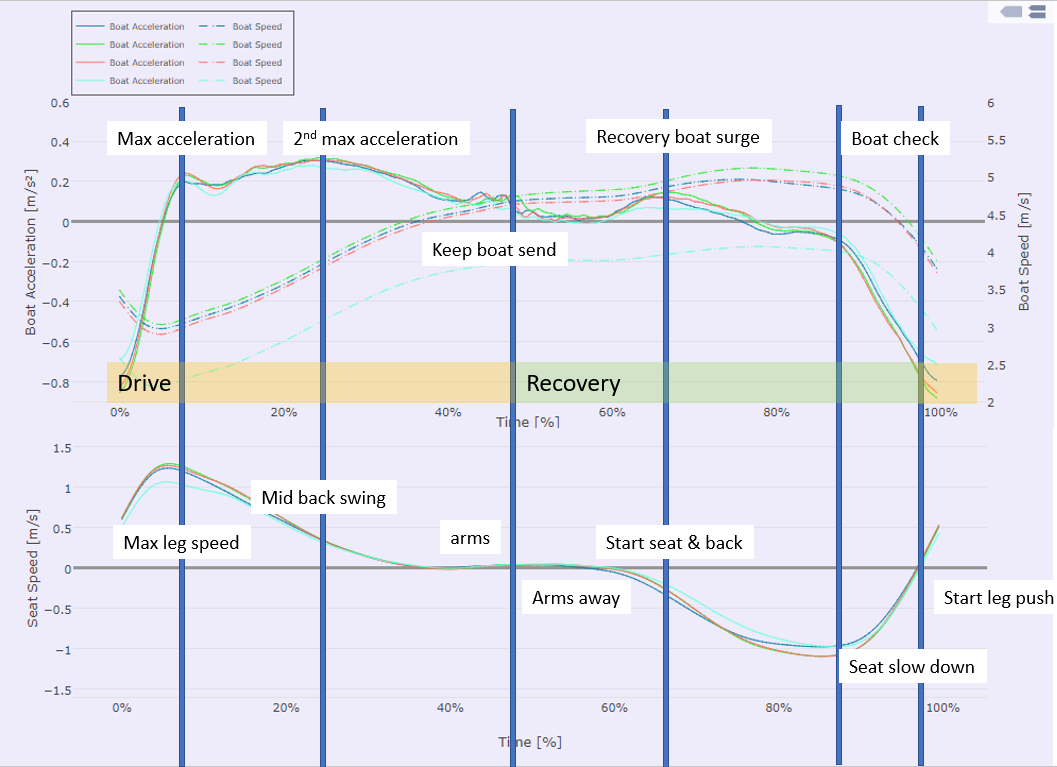
Aug 1 2019
The EURow Regatta in Linz, Austria
Friday
On Friday, July 26, we drove our trailer to Ottensheim near Linz. That’s a very easy 3.5 to 4 hour drive, down to Vienna and then basically following the Danube upstream, passing beautiful Melk and other nice places.
Romana and I parked the trailer on the race venue, claimed rack space by putting our boats on it, and then drove back to Linz to find our accomodation.
We had a small 1 room apartment about 2km east of the center of the town. It was past 7pm when we wanted to get something to eat, so I pulled out my phone and looked for the nearest place on Foursquare. This turned out to be some place with good reviews, about 700m of walking in the southeast direction.
That turned out to be walking 1500m, because of some construction sites blocking the shortest route. And when we arrived there, in the middle of an industrial area, the place was closed for the summer.
So I thought we should take a taxi to the city center and eat there. Well, there’s no Uber in Linz, and before I had figured out the phone numbers of a classical taxi service, we had a better idea. There was a big hotel close to our apartment, on the bank of the Danube. Why not have a dinner in the hotel restaurant? That worked out, but we ate later than planned, and we got a 3km hike as our exercise of the day.
Later, we found a piece of paper in our apartment, listing places to eat including opening times.
Saturday
Romana dropped me off at the regatta course in the morning, and then drove to lake Lipno on the Czech side of the border to pick up our son Robin, who had spent a week at a sailing summer camp.
I took care of my single. Then I had a coffee with Dave and Daniela who represent Wintech, Concept2 and Nielsen-Kellerman in the Czech Republic, to tie out some details about the September camp.
Then it was time to get ready to race.
The EURow regatta (I don’t like the name, by the way) is a revamped Austrian Masters Nationals. It’s open for crews from other nations, and they are marketing it as a EU wide regatta, sort of like Euromasters in Munich. As it is a new or re-branded event, and it is held on the same course as the World Rowing Masters Regatta (WRMR) in 2020, Romana and I (and a few other Czech Masters) thought it was a good idea to check out this regatta. My other motivation was that I have done very little racing in the single, in this season, and I know I need some race experience as a preparation for this year’s WRMR. The good masters rowers in Austria are fast enough to be a good trial. One always performs differently in racing conditions than in a training.
The format of the regatta was heats on Saturday (but the heat winner did get a medal) and finals on Sunday (with medals for the first three). As the Masters C 1x had only 6 participants, Saturday was a race for which lane you race in on Sunday.
So how did the race go? It was ideal weather, almost no wind, flat water, fixed start pontoons and I didn’t know 4 of my 5 opponents. So it was an ideal practice race. The only opponent I knew was Mr Helbig. Mr and Mrs Helbig are usually a few seconds faster than Romana and I in the mixed 2x, but I never raced him directly in the single. Also, I didn’t check his online results, but somehow was expecting him to be roughly as fast as I.
I had a great start. Some people were ahead of me and some were behind, including Mr Helbig. Based on my Critical Power curve of last season and recent trainings, I was aiming for around 315 to 325 Watts. When I took a first glance at the SpeedCoach, about 200m into the race, I was going at 350W. I decided to let that gradually drift down while keeping the stroke rate at 32, then wind up in the second half.
I succeeded beyond my expectations. I was able to hold the power around the 340W range.
Nobody passed me and I didn’t pass anyone else, although I tried hard to catch up with the guy rowing ahead of me. I finished third. As you can see from the picture, I was happy with the result.
Look, I had the most consistent splits from the first to second 500m of all competitors!
The picture also gives a really good impression of the nice flat water. According to the official results I finished third (no surprise) in a time of 3:48.
With that race a success, we spent the afternoon exploring the old town of Linz.
In the evening, I uploaded the race’s data to the rowsandall.com site. As expected, this did shift my Critical Power curve by about 25W around the four minute benchmark. Yay! I guess I have to move my target for the upcoming regattas.
We had dinner in the hotel restaurant again. This time, we walked straight to it, instead of doing a 3km hike.
Sunday
So Sunday would be a repetition of Saturday’s program, but two hours earlier (and divided in “big” and “small” finals for those disciplines that had more than 7 competitors). And then, at the end of the afternoon, there would be mixed racing. Exciting!
My first race was at noon, so in the morning we took care of the double, had a coffee, watched some races, talked to friends. Had a really good time.
Then it was time to prepare for my race in the single. The weather was virtually the same as on Saturday, and I was up against the same opponents. However, I considered Saturday’s race a close result (except for the winner, perhaps), so everything was open again.
This time I was racing in lane 2. The first 200m seemed to be a repetition of Saturday (more about that later), with Mr Humbek leading, followed by Mr Hettler, and me rowing in third place. The difference was that my new target was 350W. When we were approaching the 500m mark, I thought I should try and pass Mr Hettler. I tried for 10 strokes, but was unable to get the power up, and I didn’t really close the gap.
As a consequence, I entered the third 250m interval with everything falling apart at the same time. The lactate burn peaked. The guy rowing behind me charged and was threatening to row through me. It was all very unpleasant, and all I could think of was somehow make it to the 750m without losing the bronze medal position. I did succeed in that, and then it was just a question of counting strokes until the finish line. Almost the same result as Saturday:
Here are the charts:
Here’s pace. See the dramatic slowdown in the third 250m:
And here’s stroke rate:
I also studied the other metrics (stroke length, slip, wash, work per stroke) but they were nearly identical between Saturday and Sunday. Well, in WpS you can see the dip as well:
And a picture of Romana and me between my 1x race and our mix 2x race, watching other races:
And now it was time to prepare for the mixed double. Always a huge event. Romana and I hadn’t raced since Euromasters in July 2018. We also knew that Ostrava was keen on beating us, and we know that the Helbig family has historically rowed 2 to 5 seconds faster than we. We didn’t know any of the other crews.
We had a good start and by 500m we were in second position, but not by much. The Helbigs and Ostrava were a second behind us.
We kept pulling strong and we were rowing really well. Passing the 500m mark, I was expecting the other crews to fall behind, but that didn’t happen. It was one of those mixed double finals again. With 250m to go I upped the stroke rate to 38 (and higher), but Michael Helbig started his engine and the Helbigs pushed for an amazing sprint. In the heat of the race, we were also passed by Ostrava. Fourth place.
Then it was time to make a group photo with all the Czech participants:
We loaded the trailer and drove home. The last 50km was driving through a very heavy thunderstorm (at an average speed of 60 km per hour) and we were home by 10pm.
Oh, and just for fun, a map of my 1x race from rowsandall.com. It’s fun to add the water navigation overlay when we were so close to a big river.
By sanderroosendaal • Uncategorized • 0 • Tags: 1x, 2x, mix, OTW, race, racing, rowing, sprint